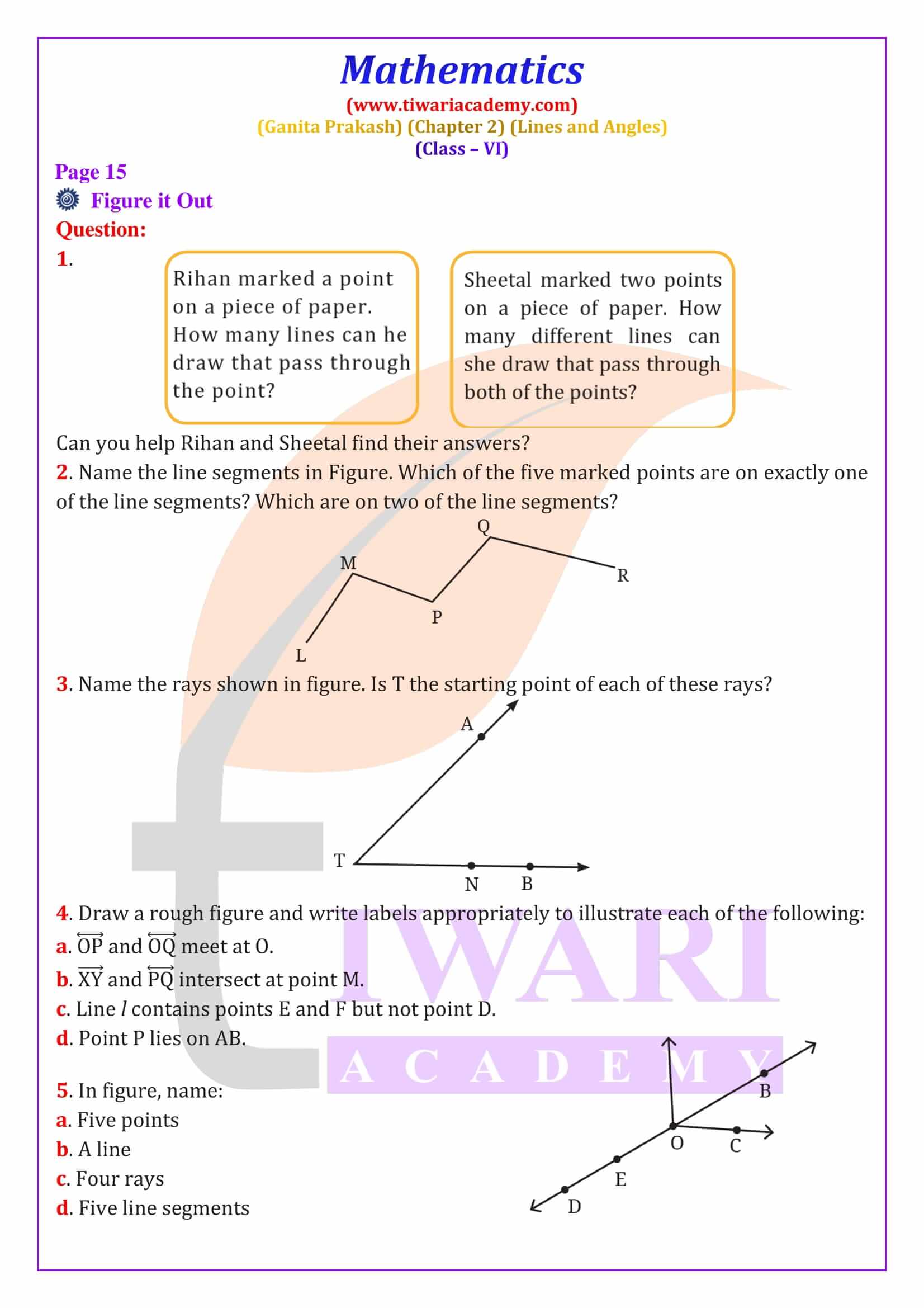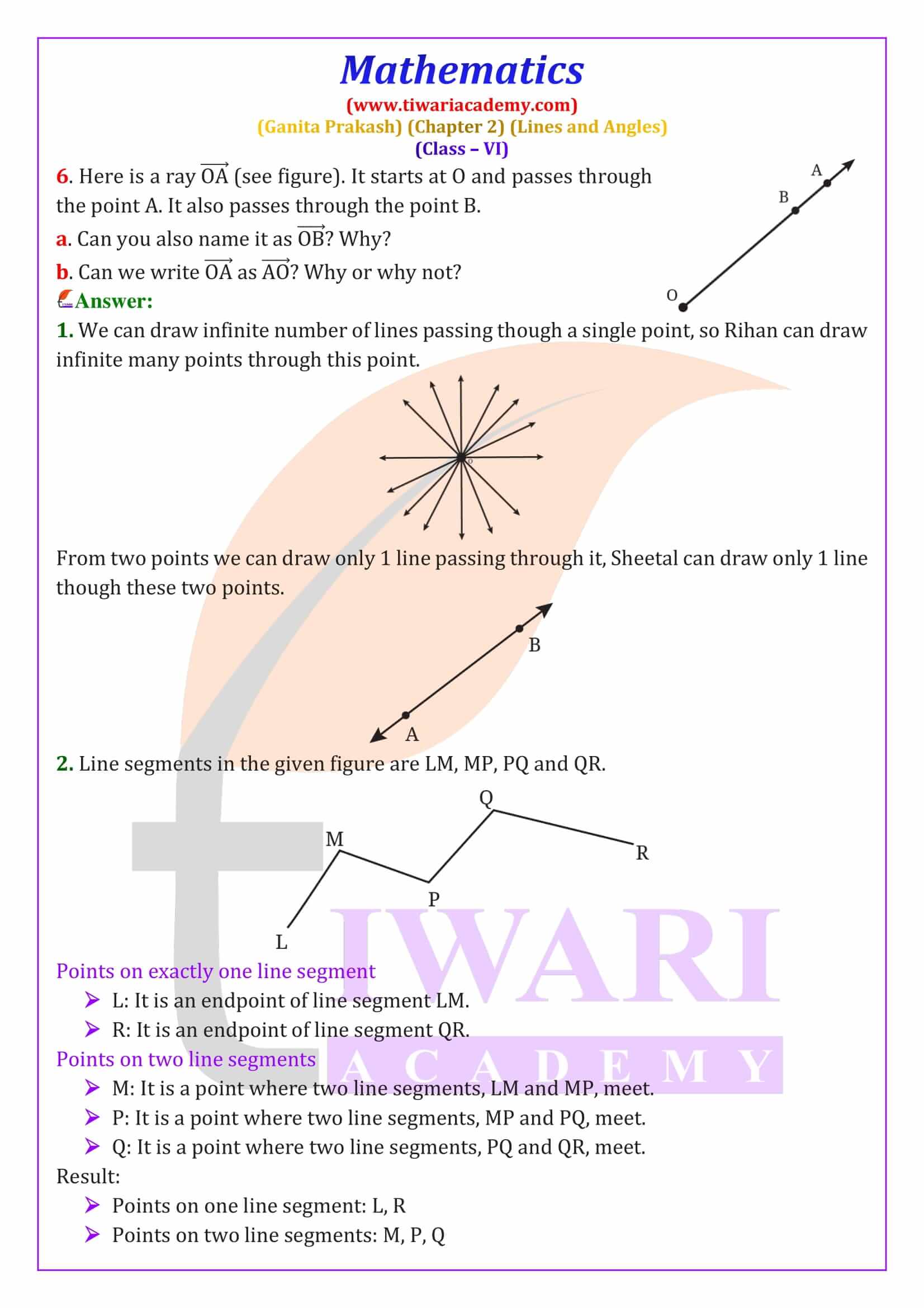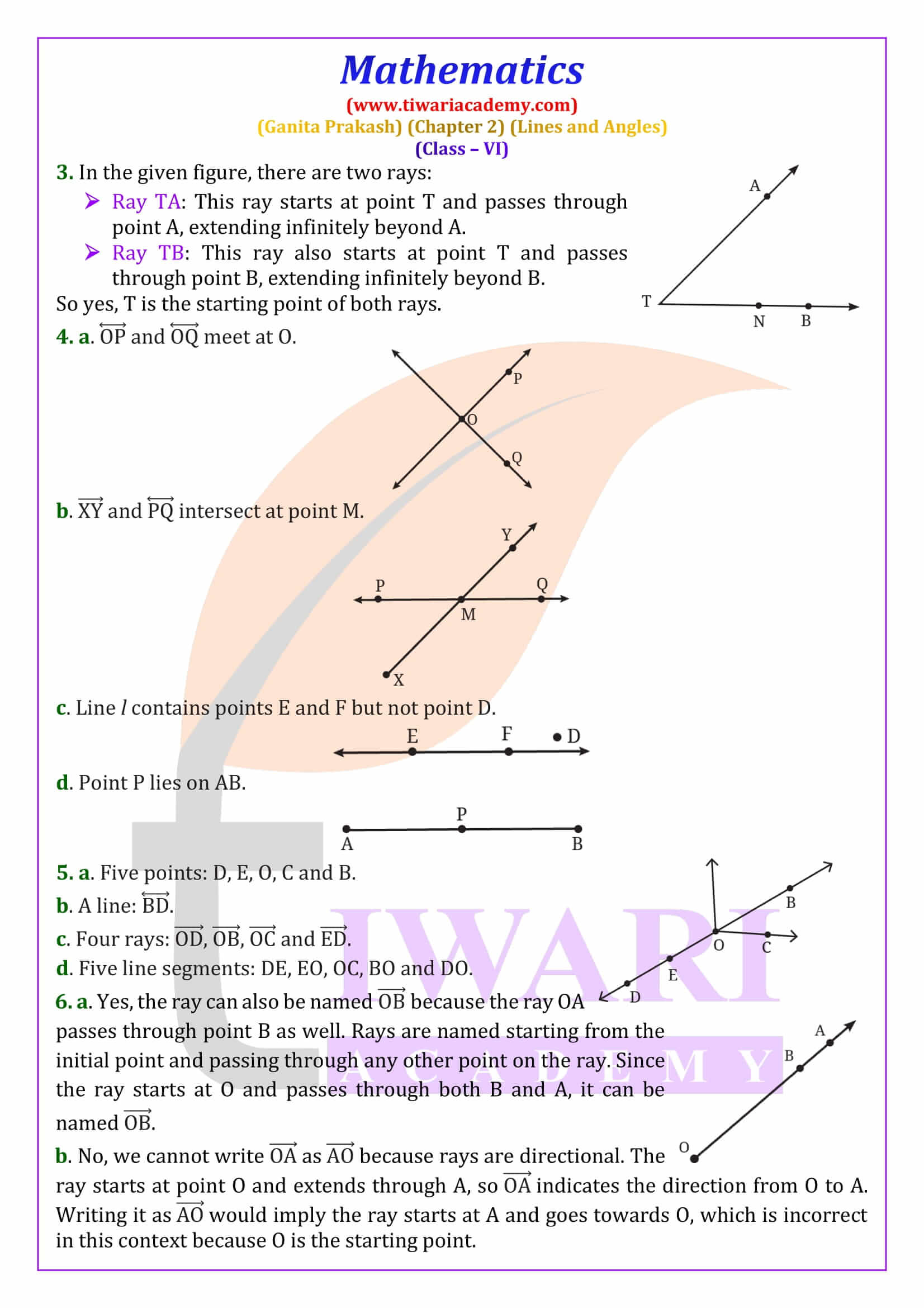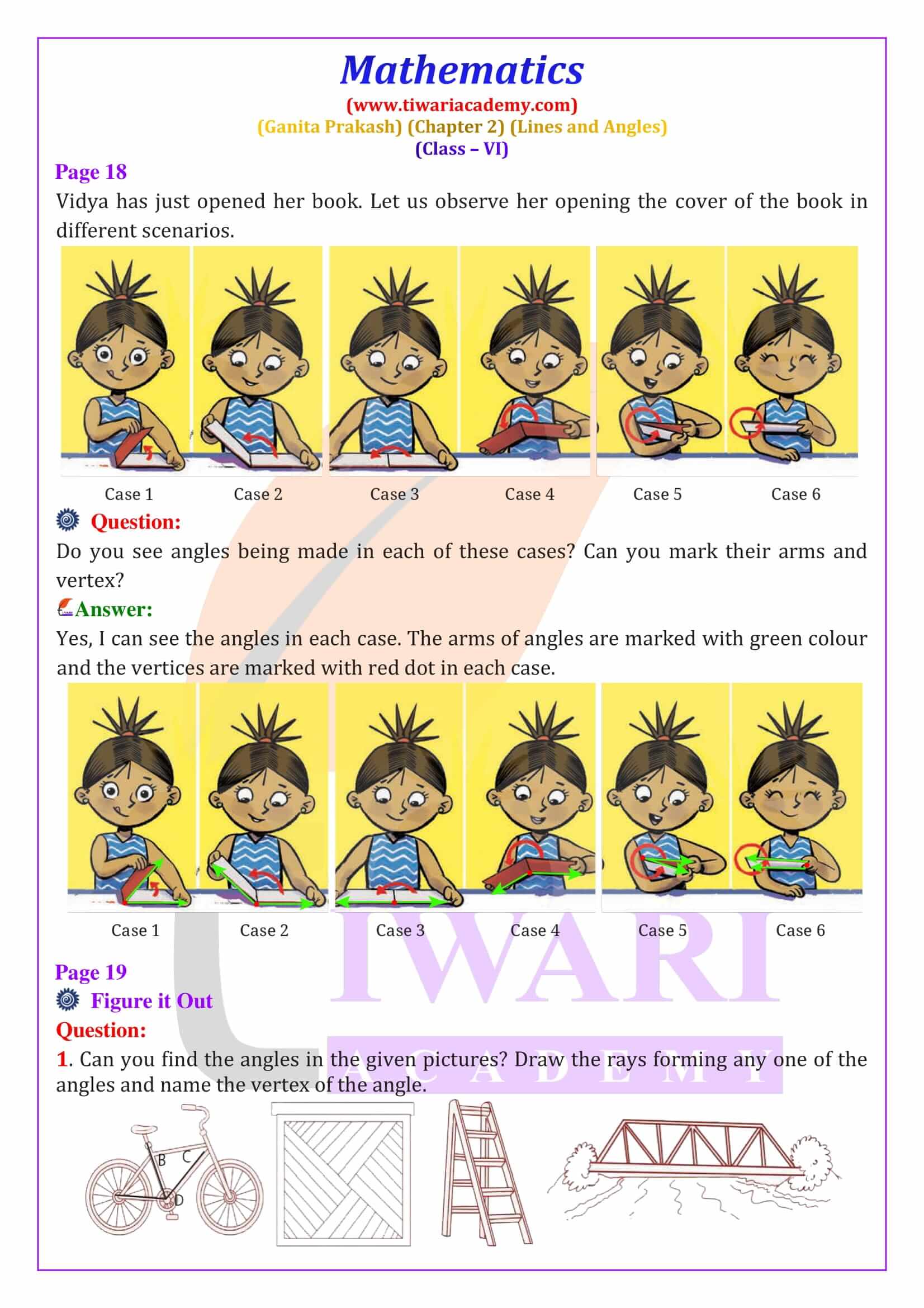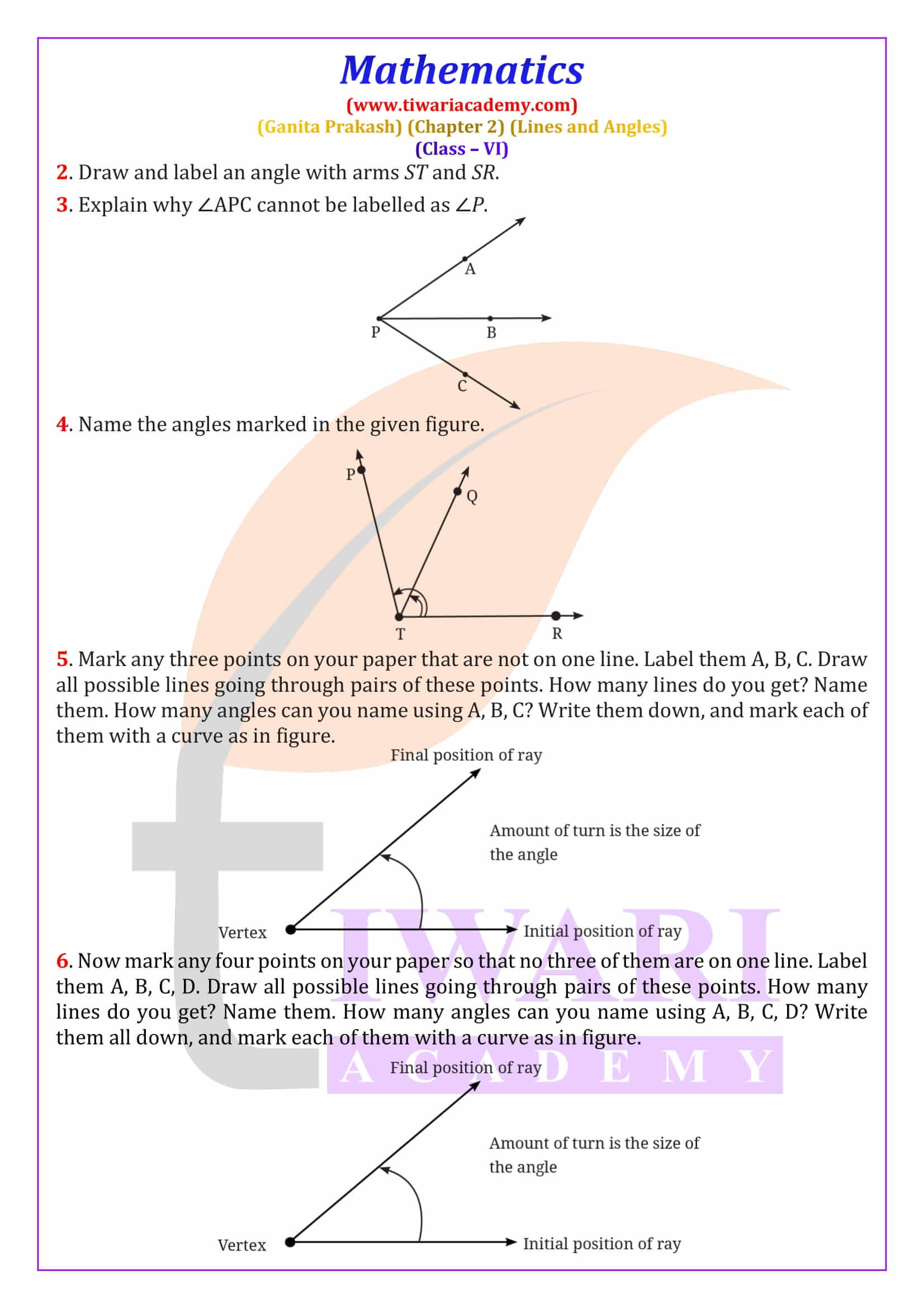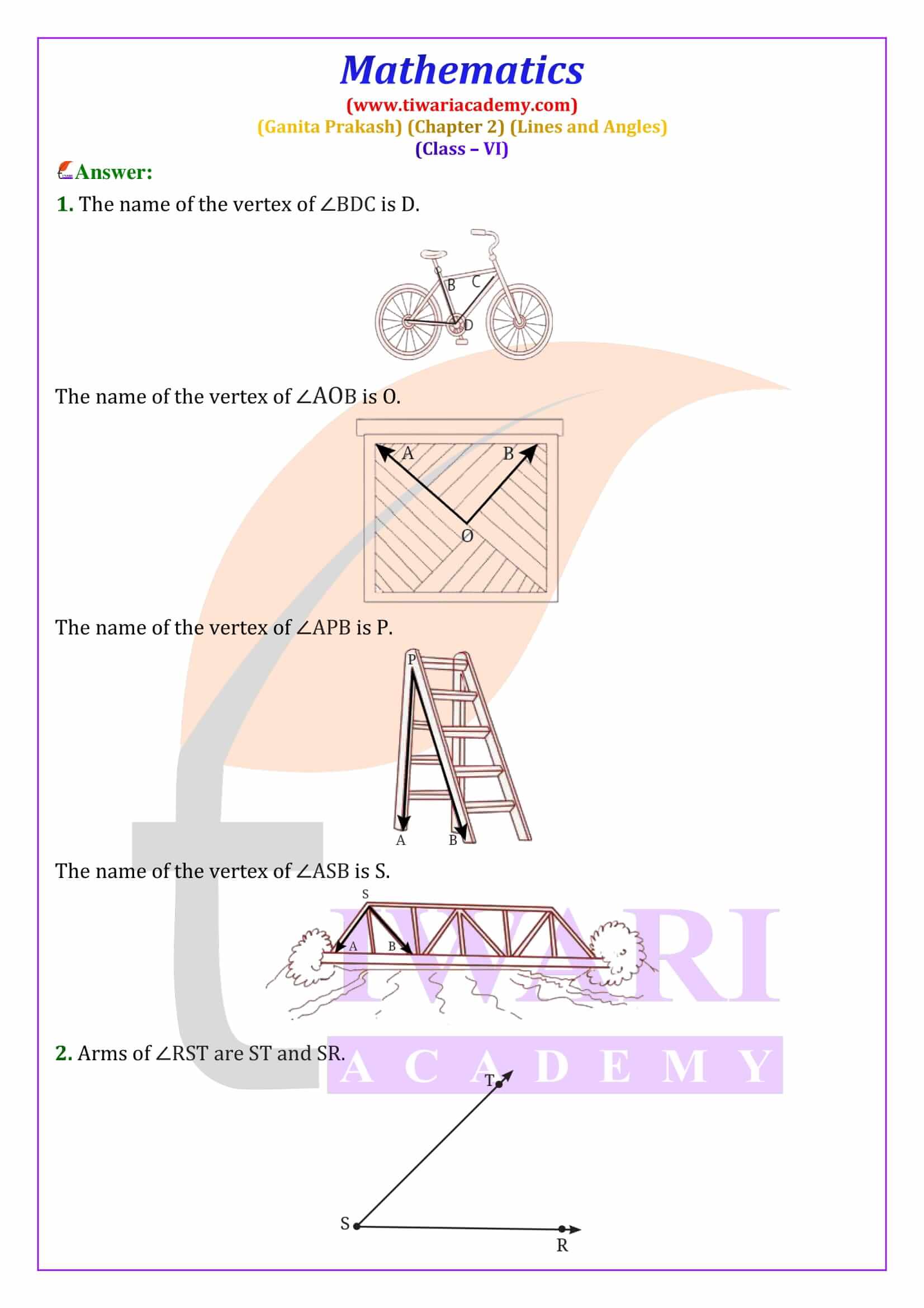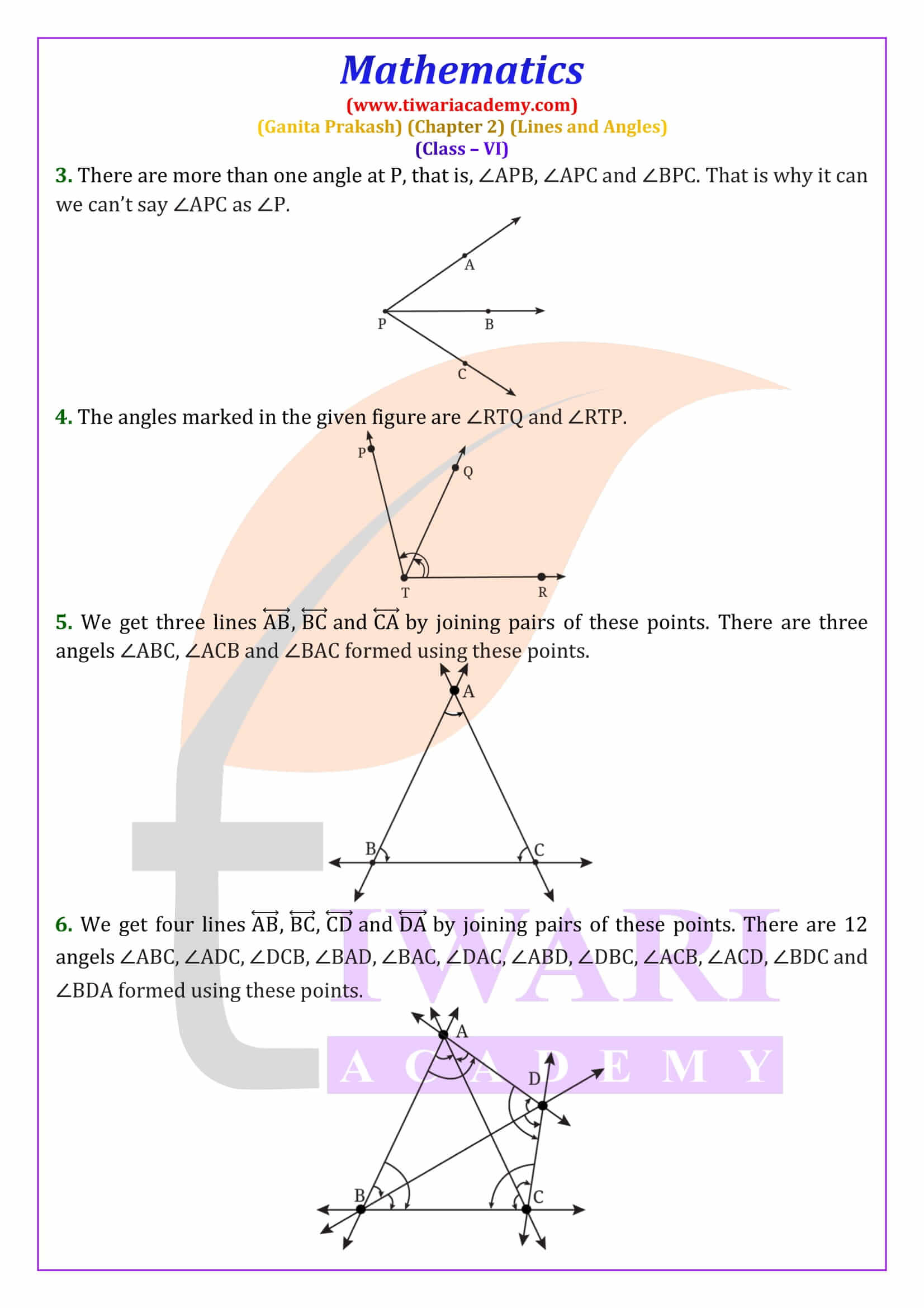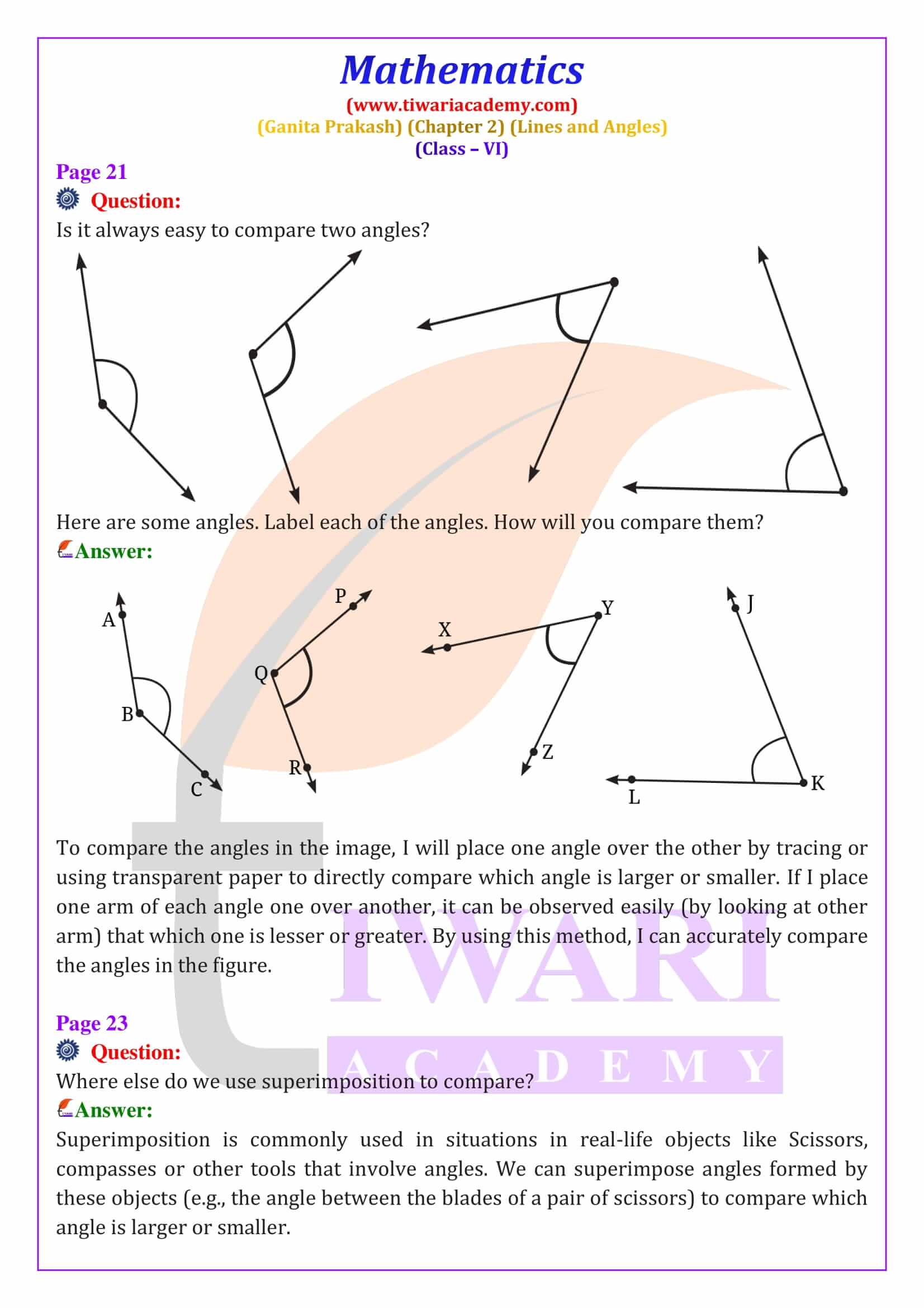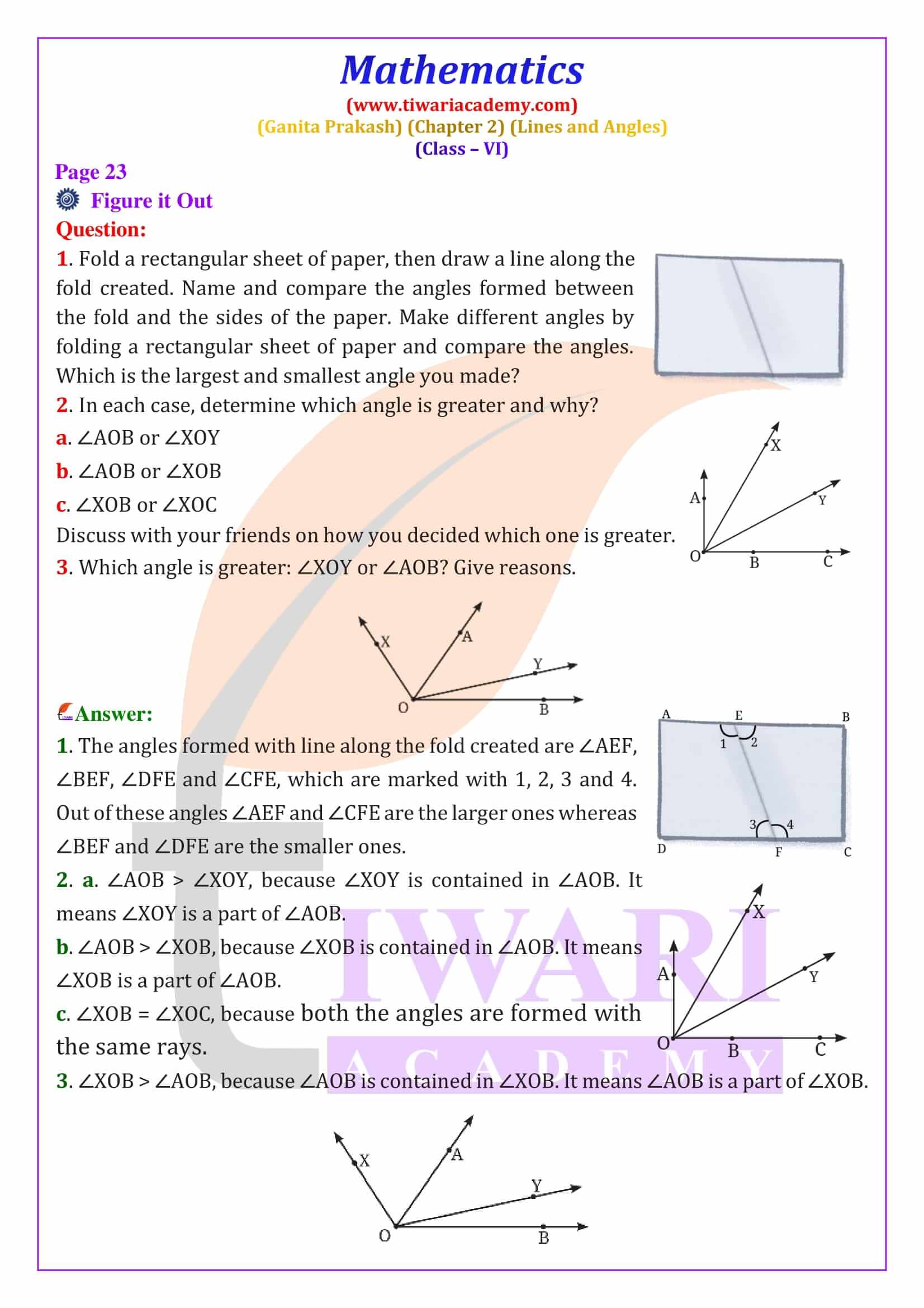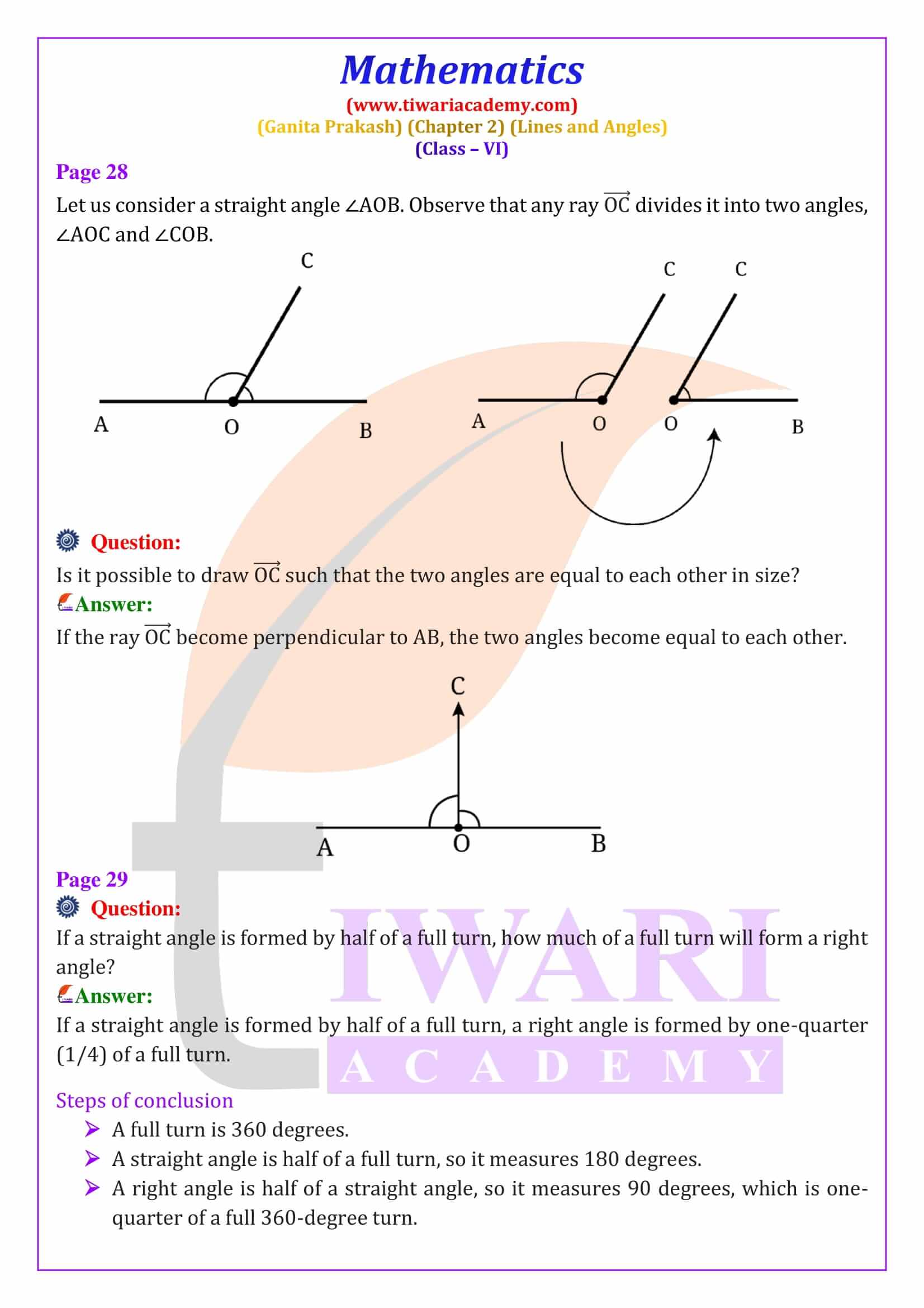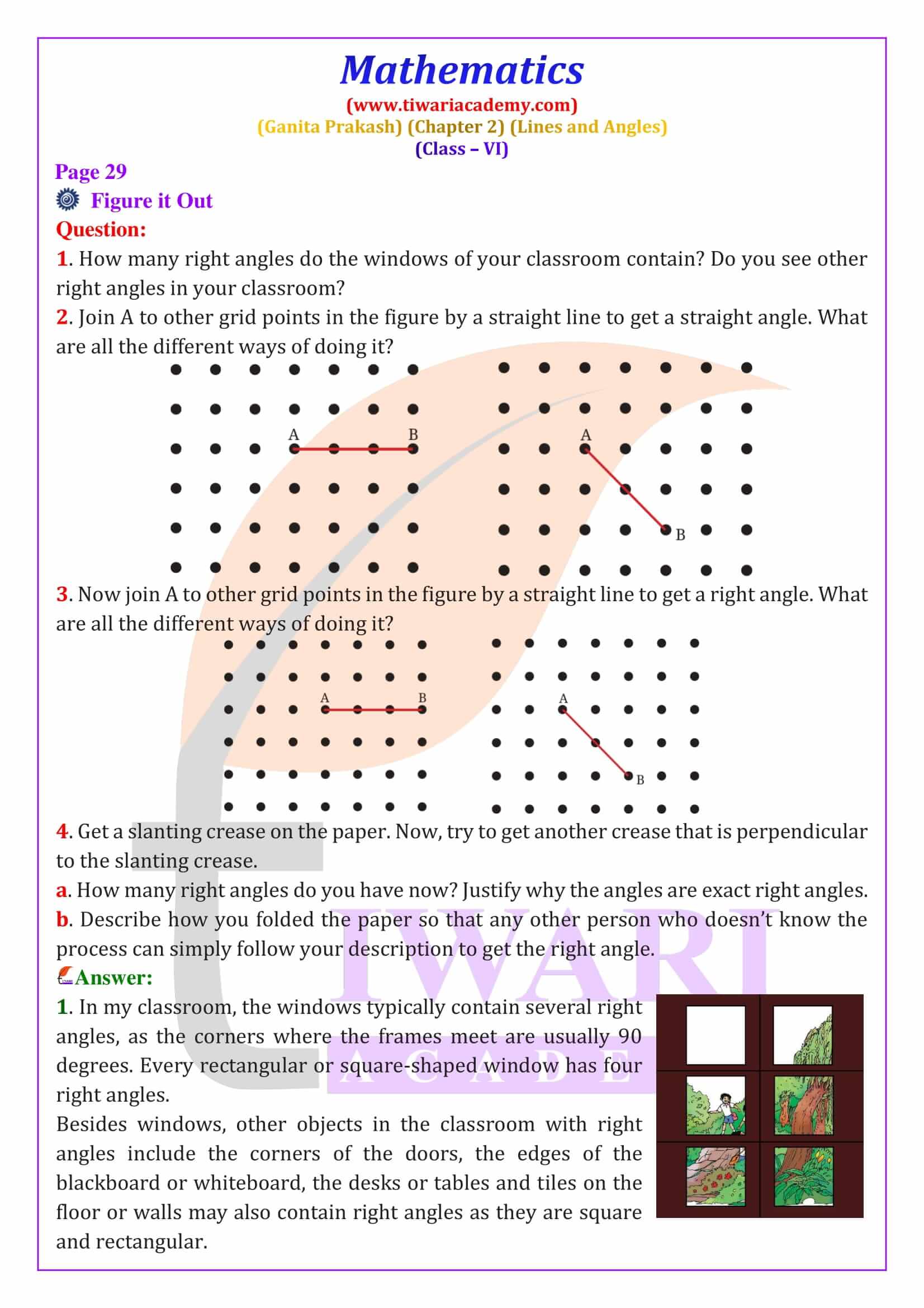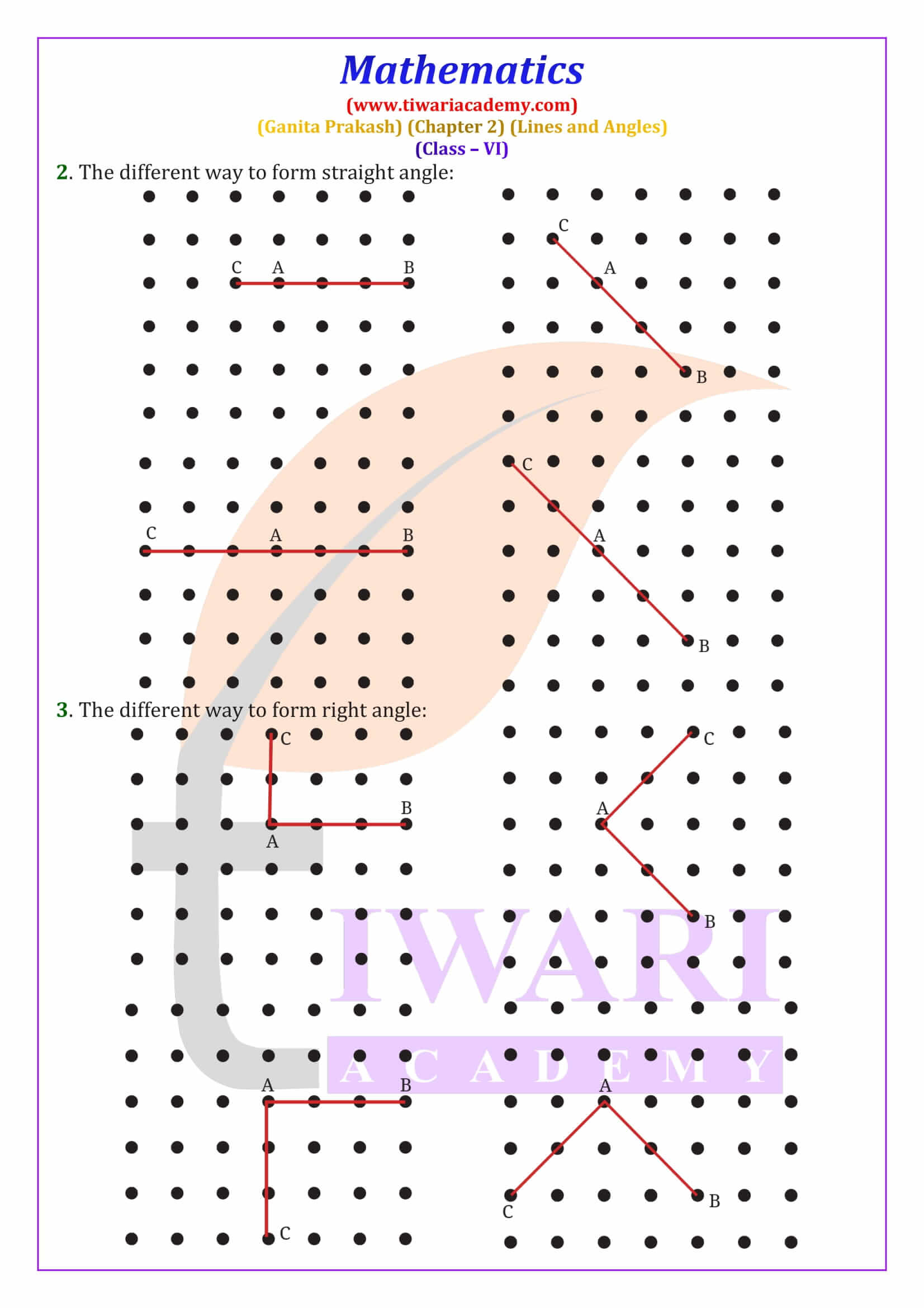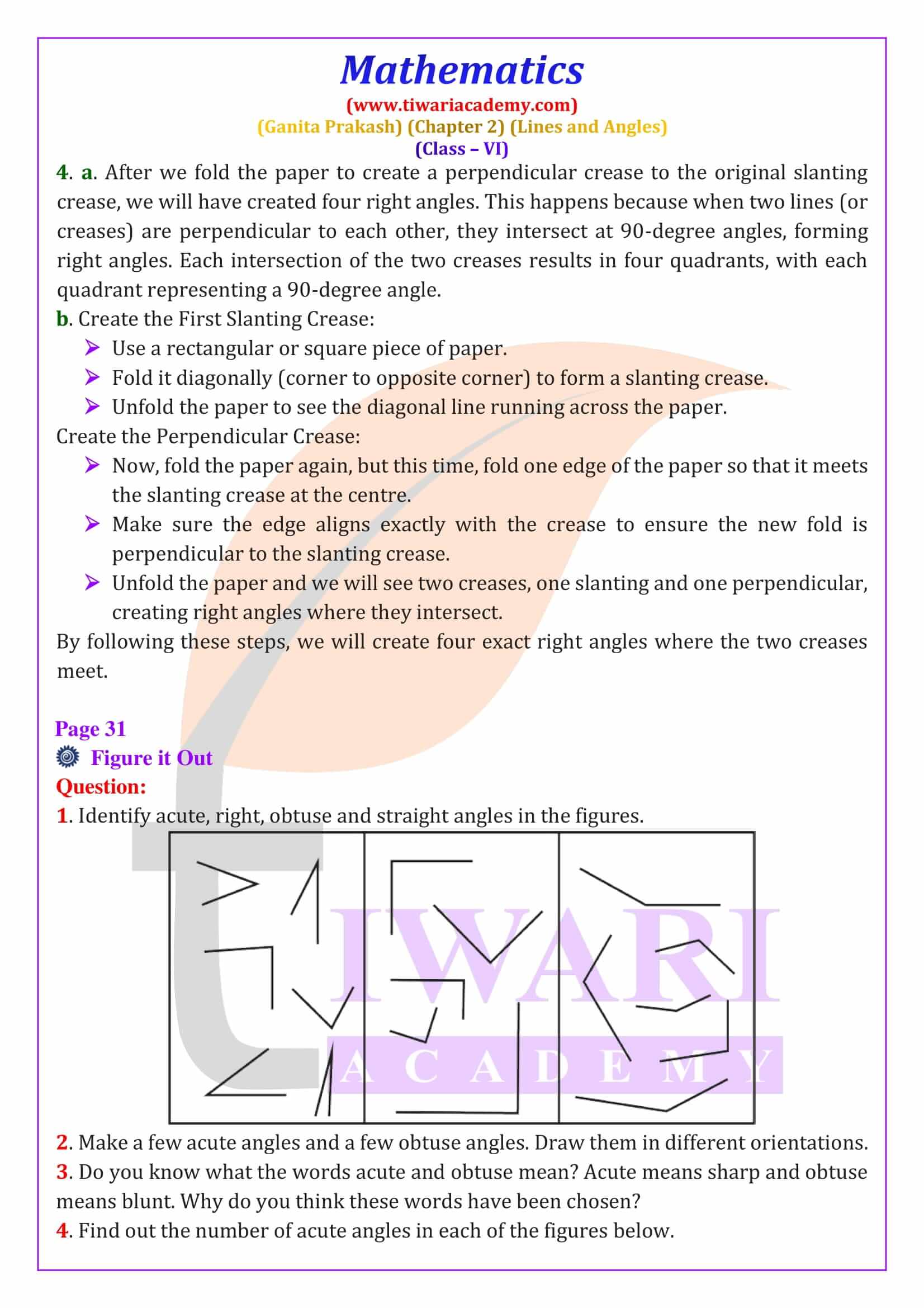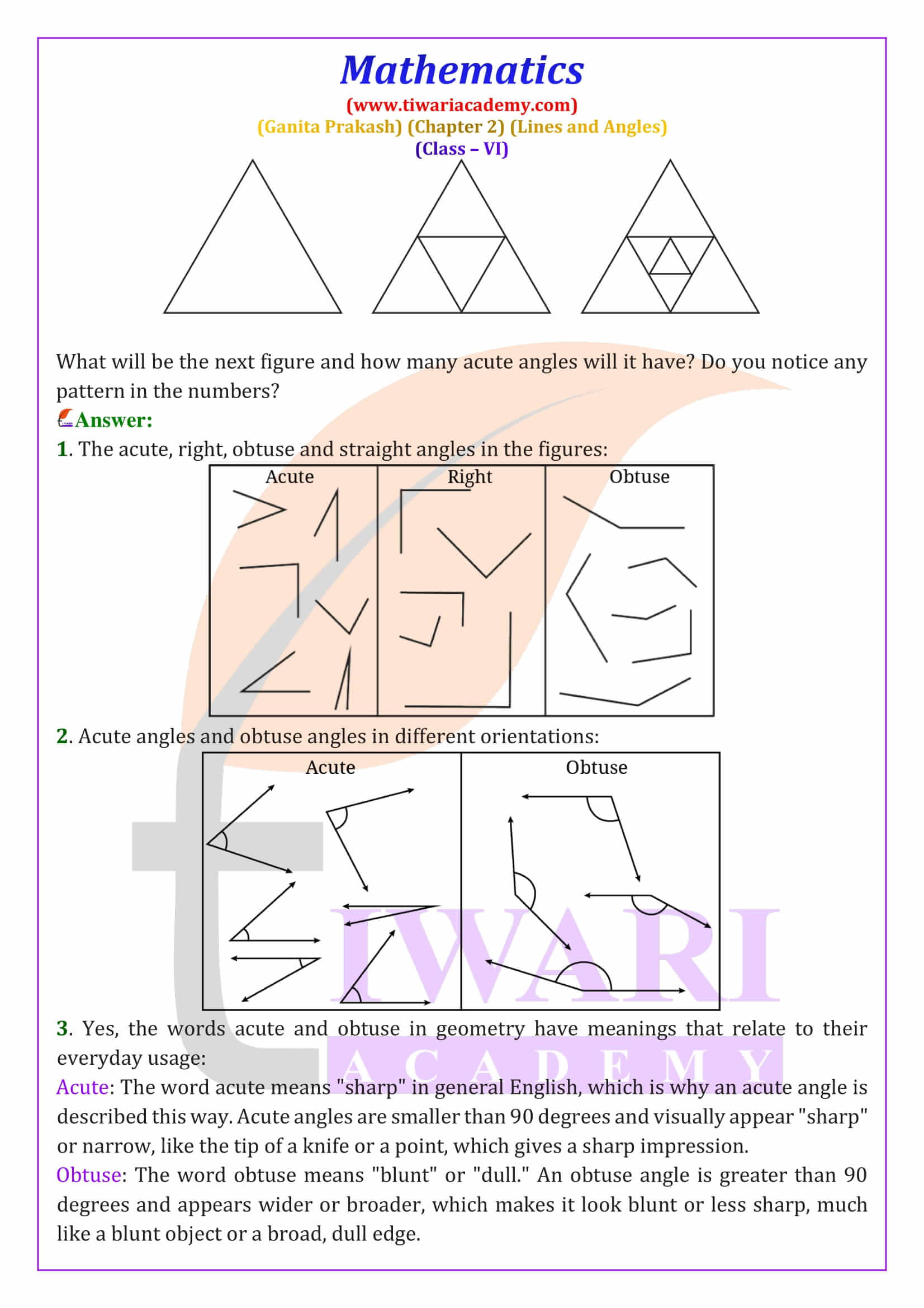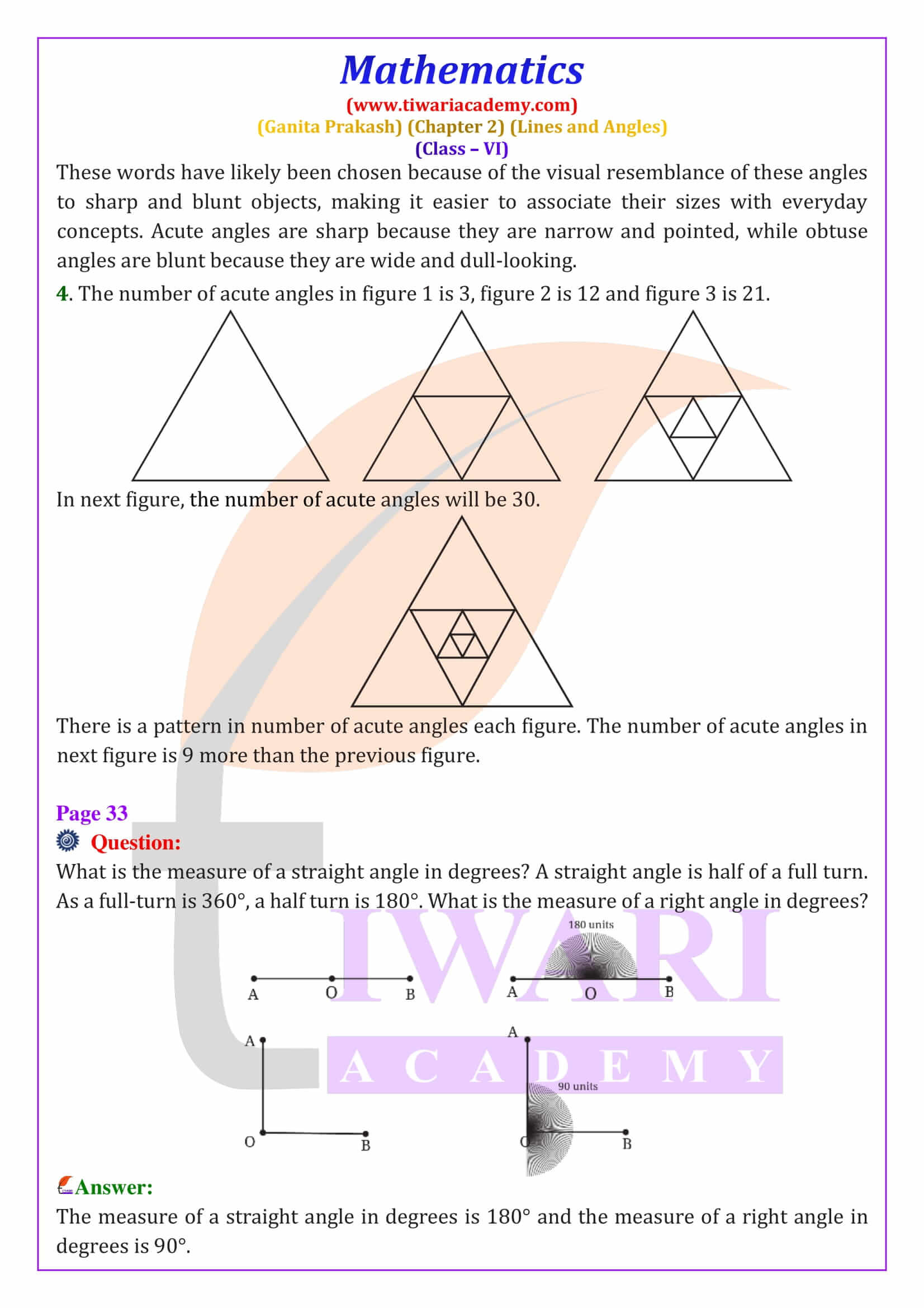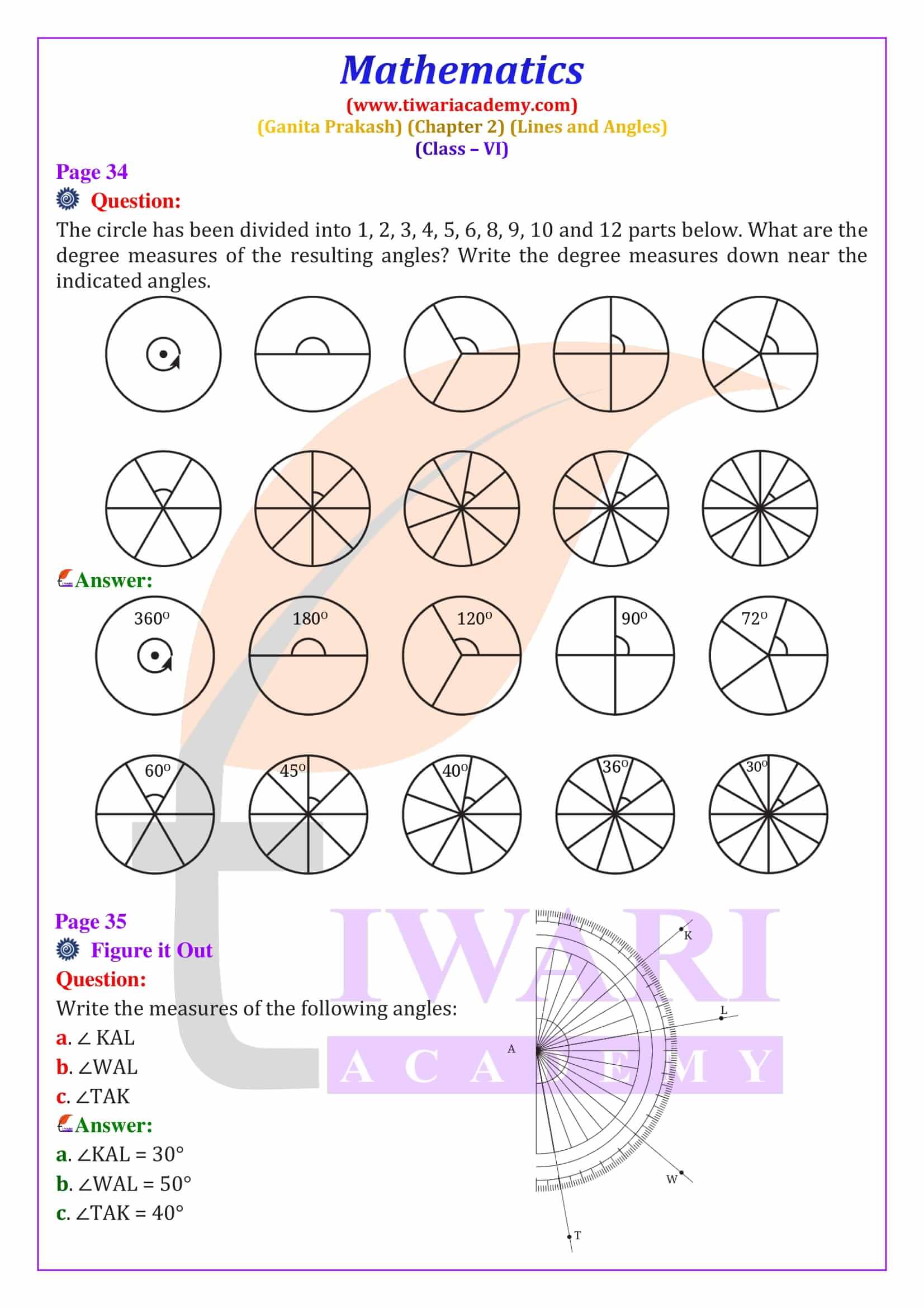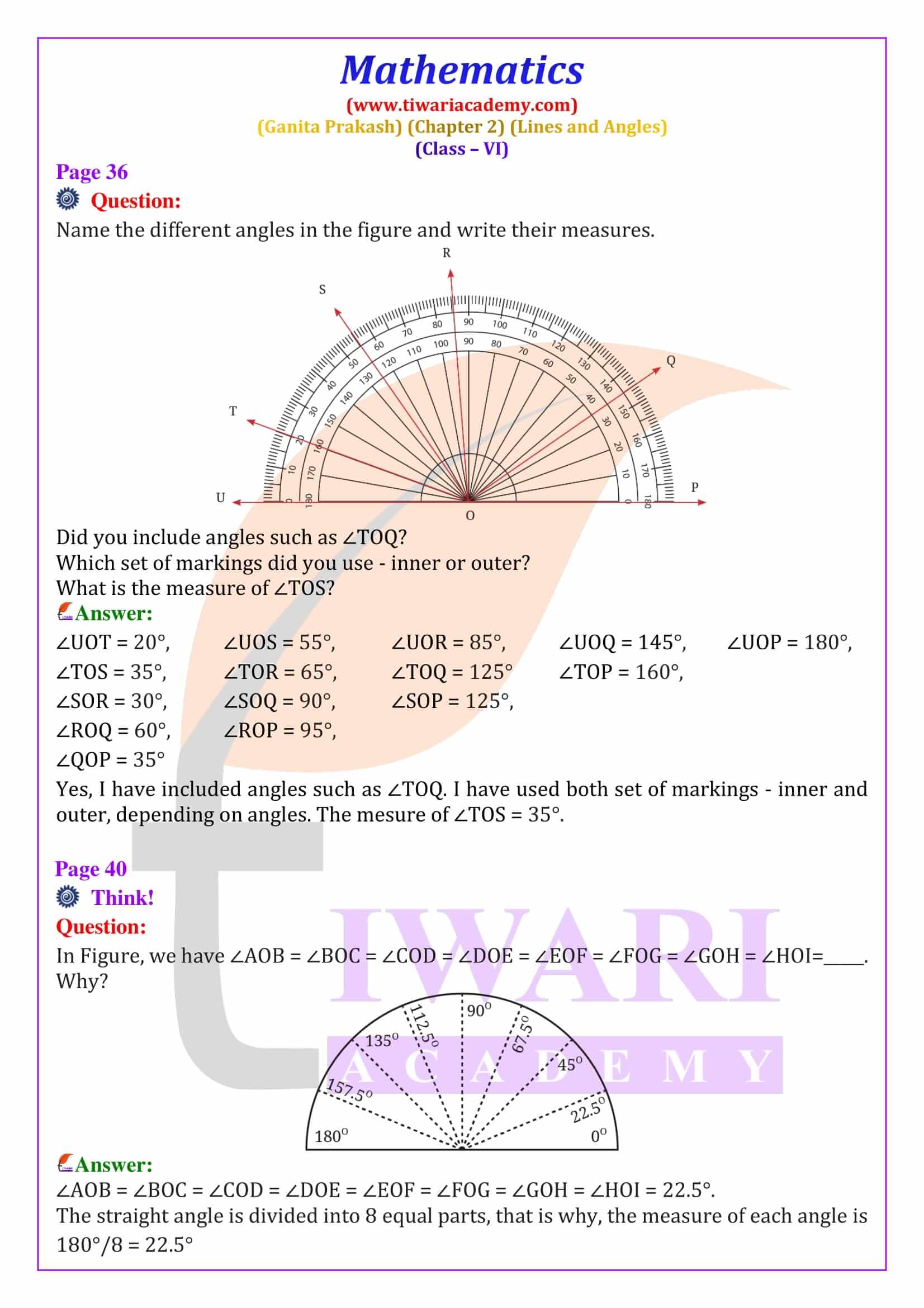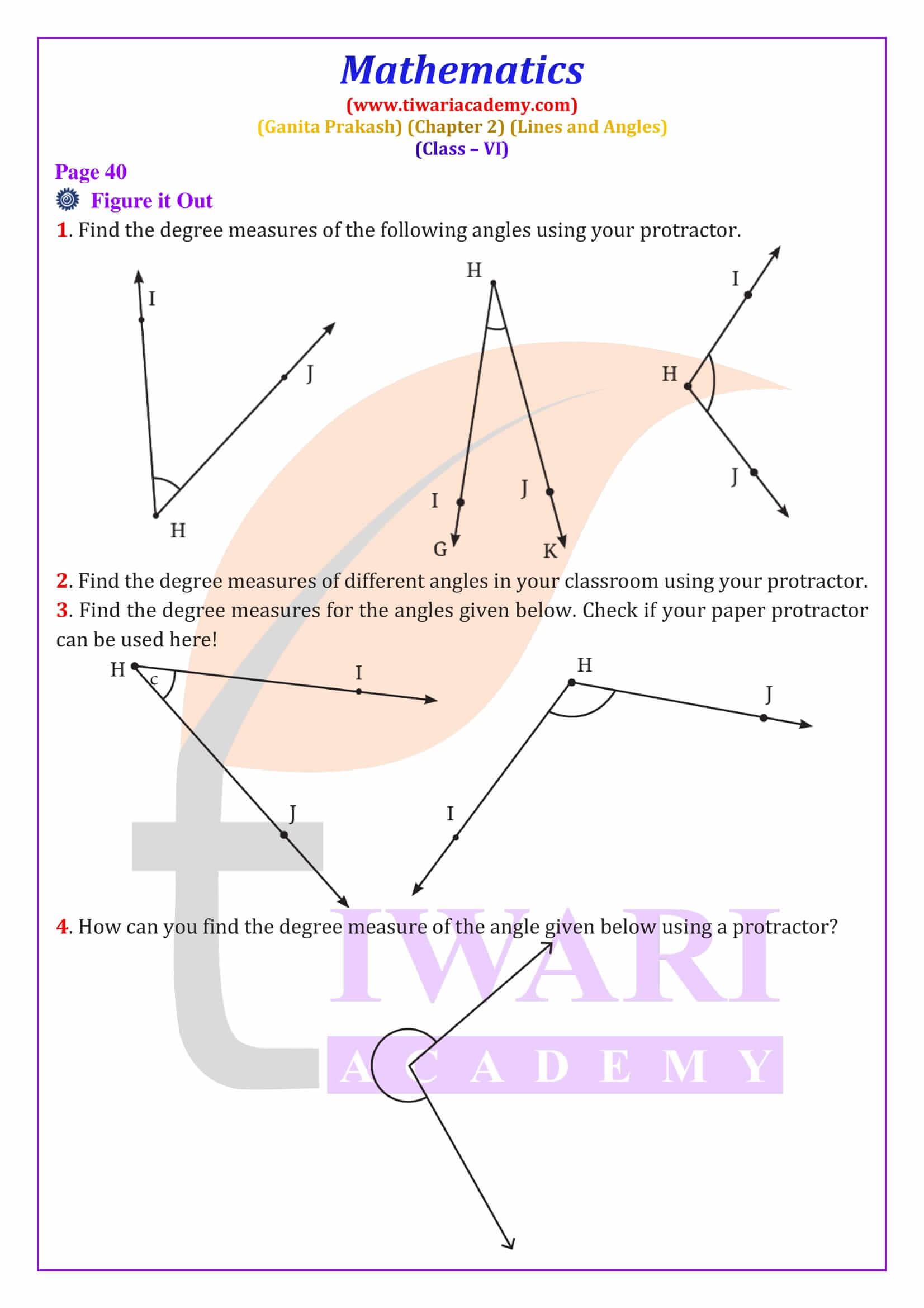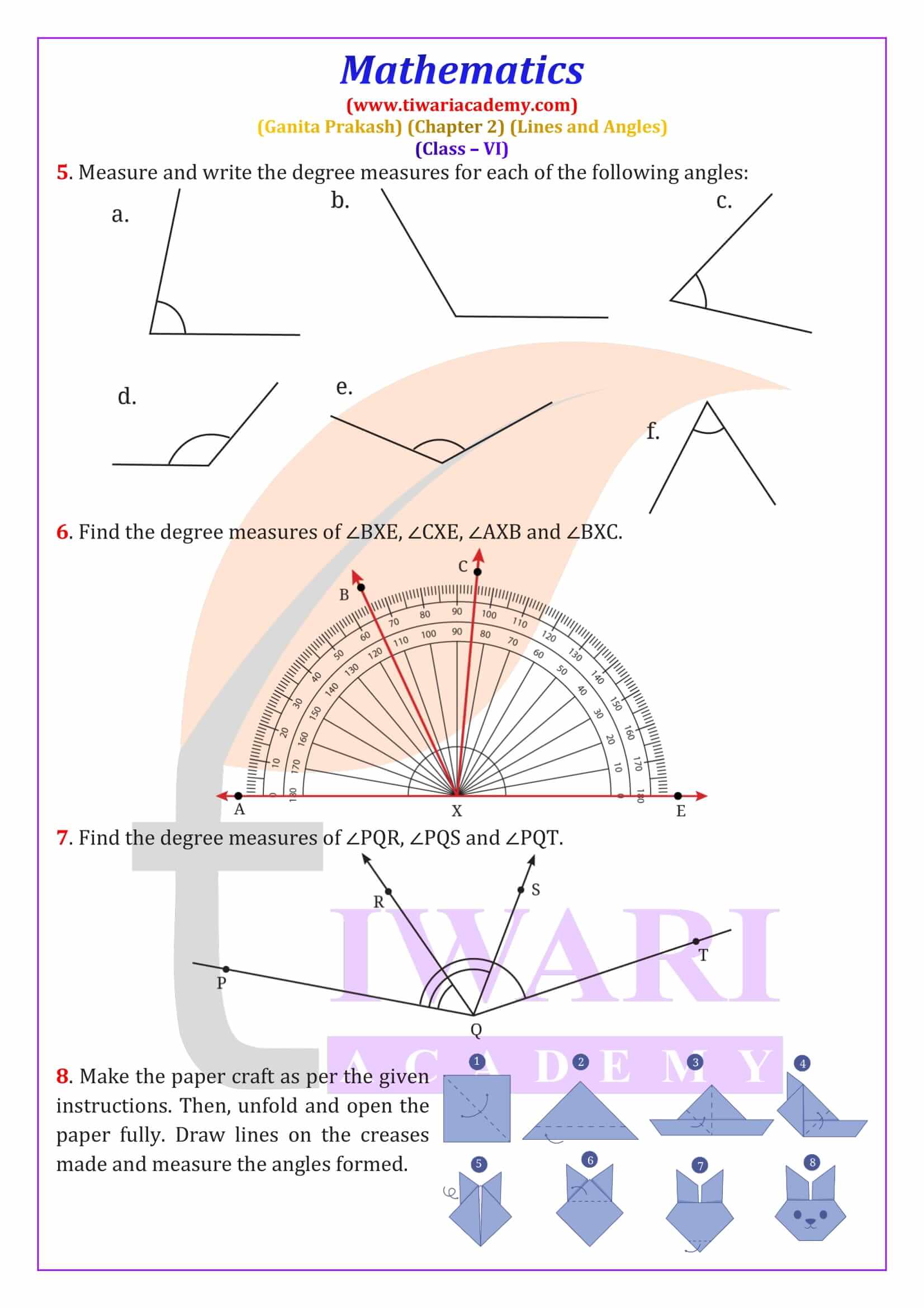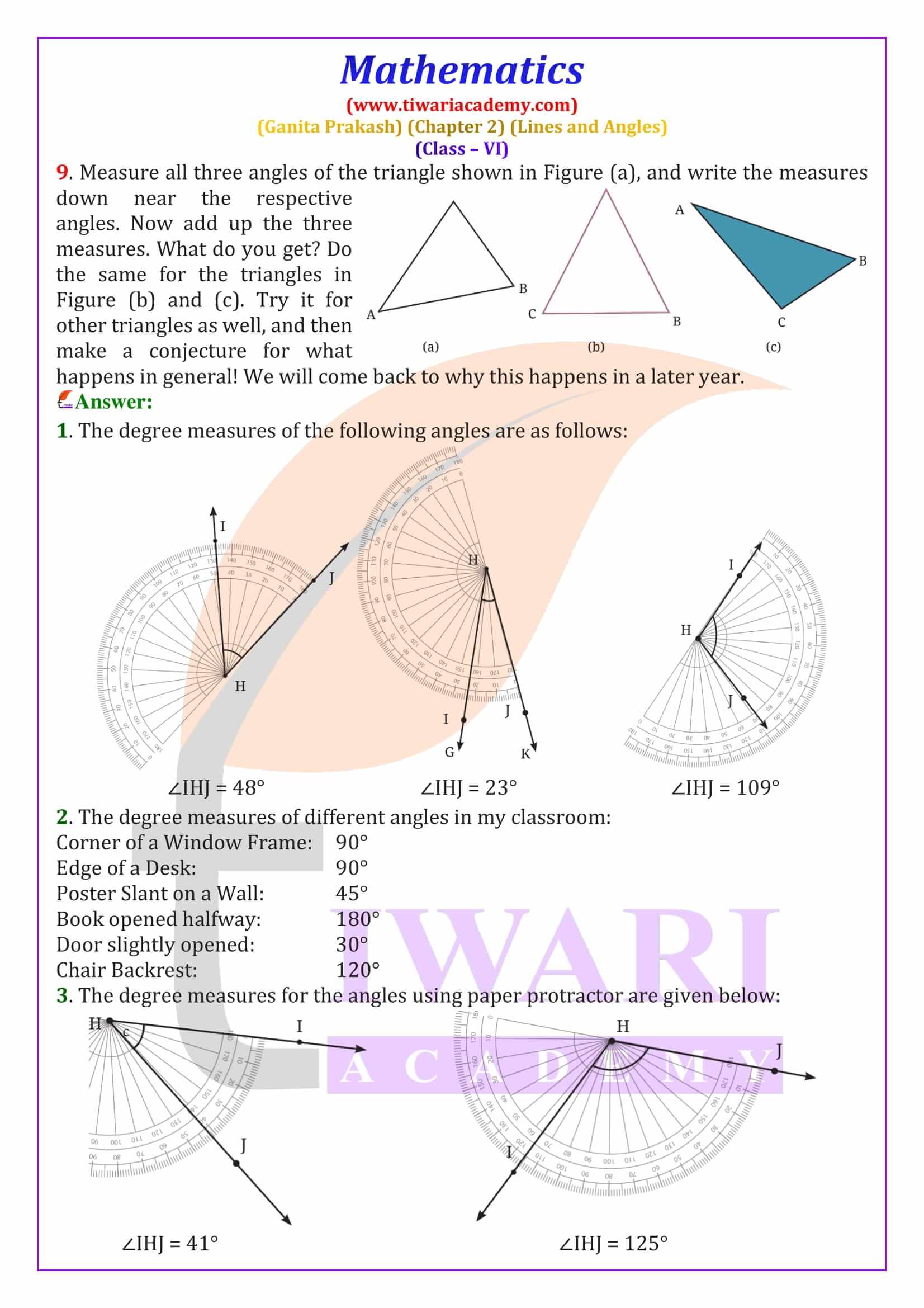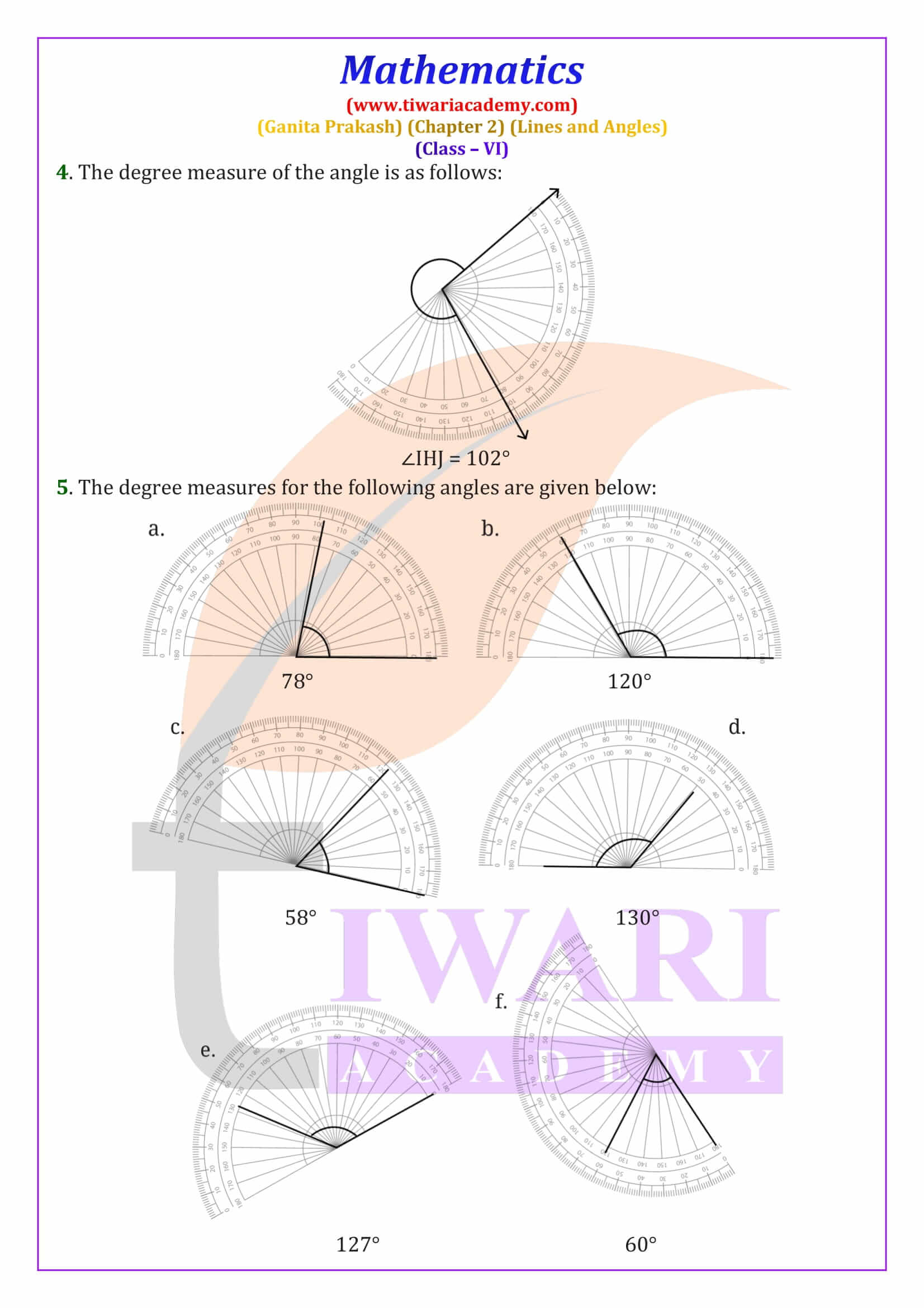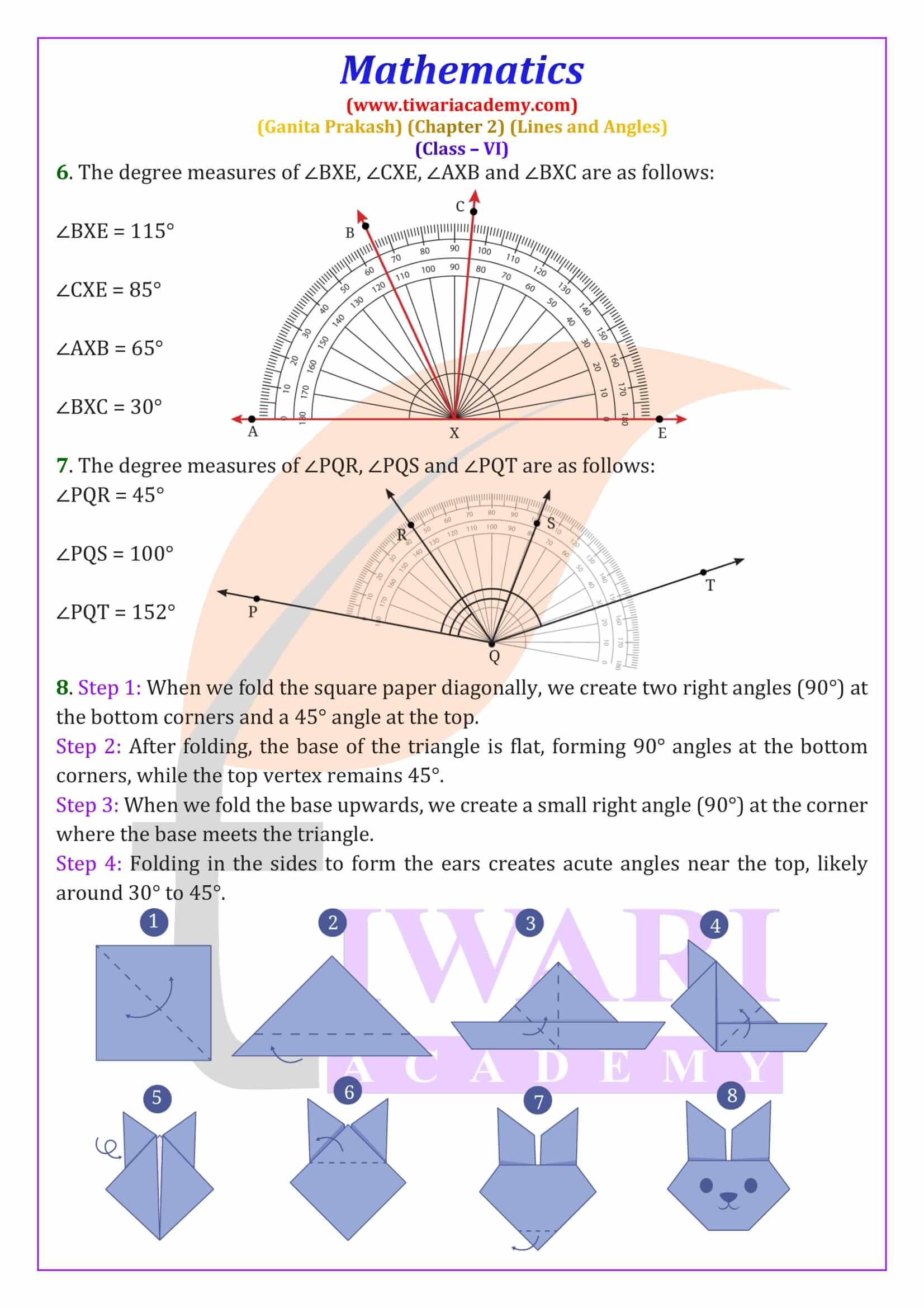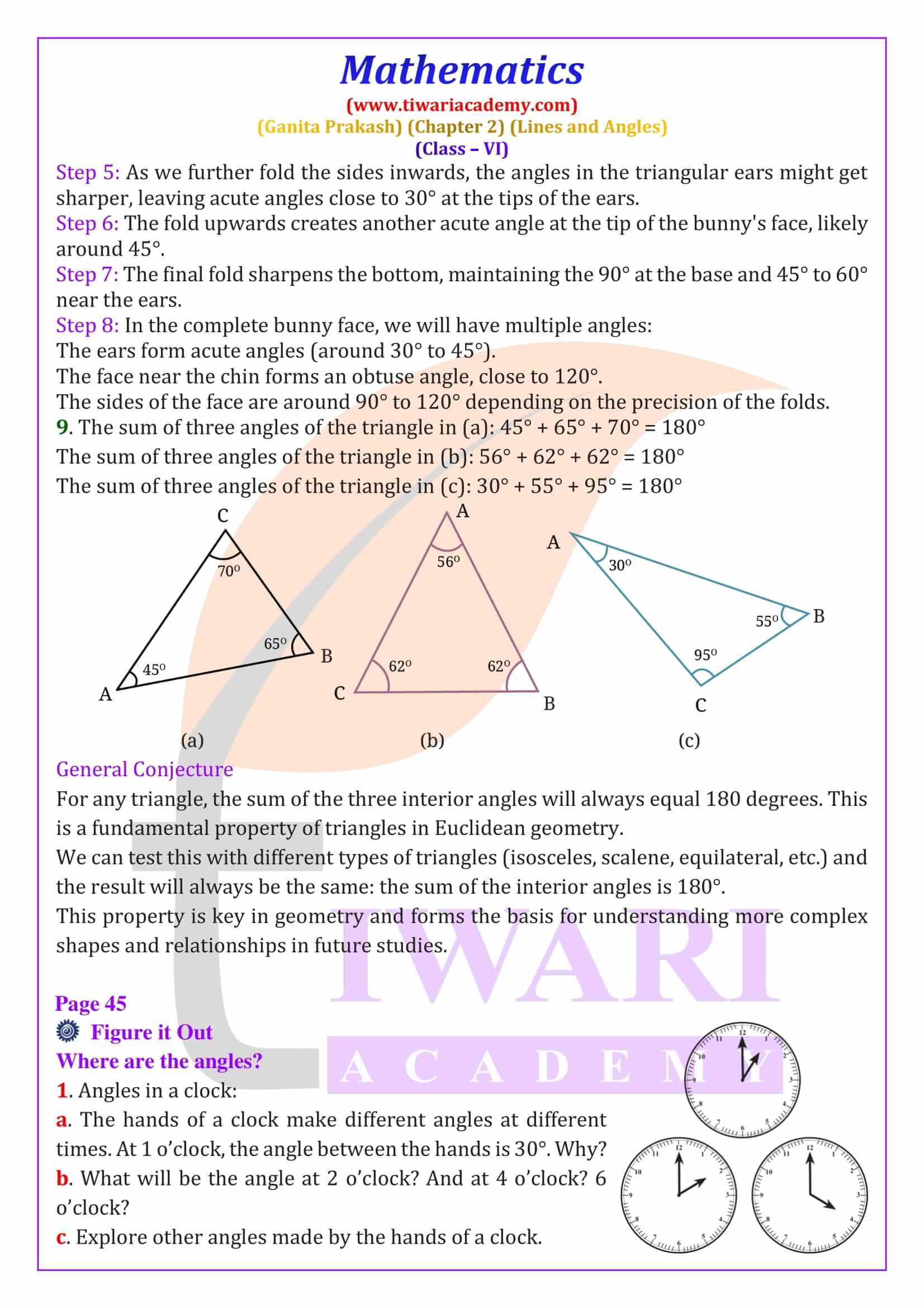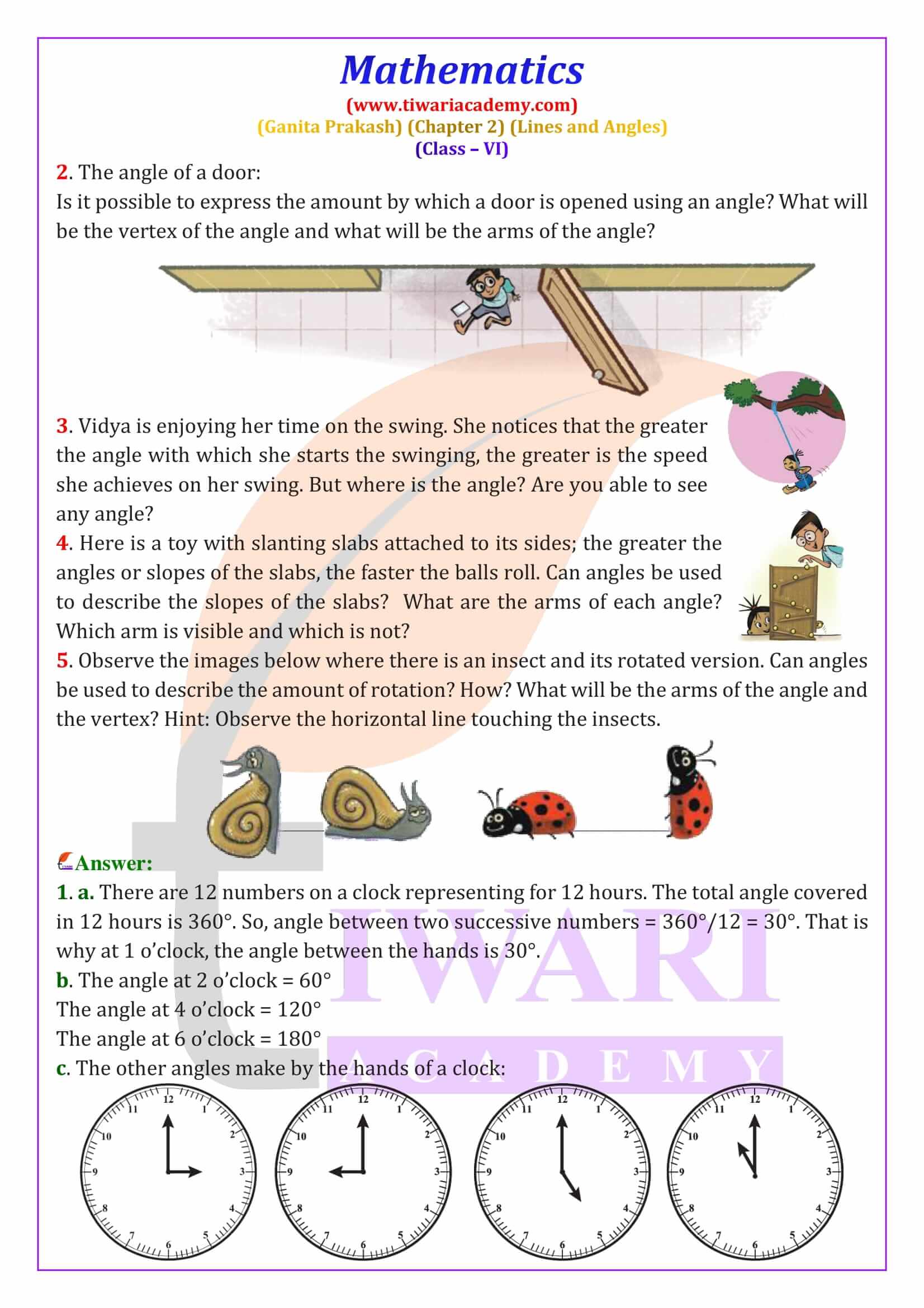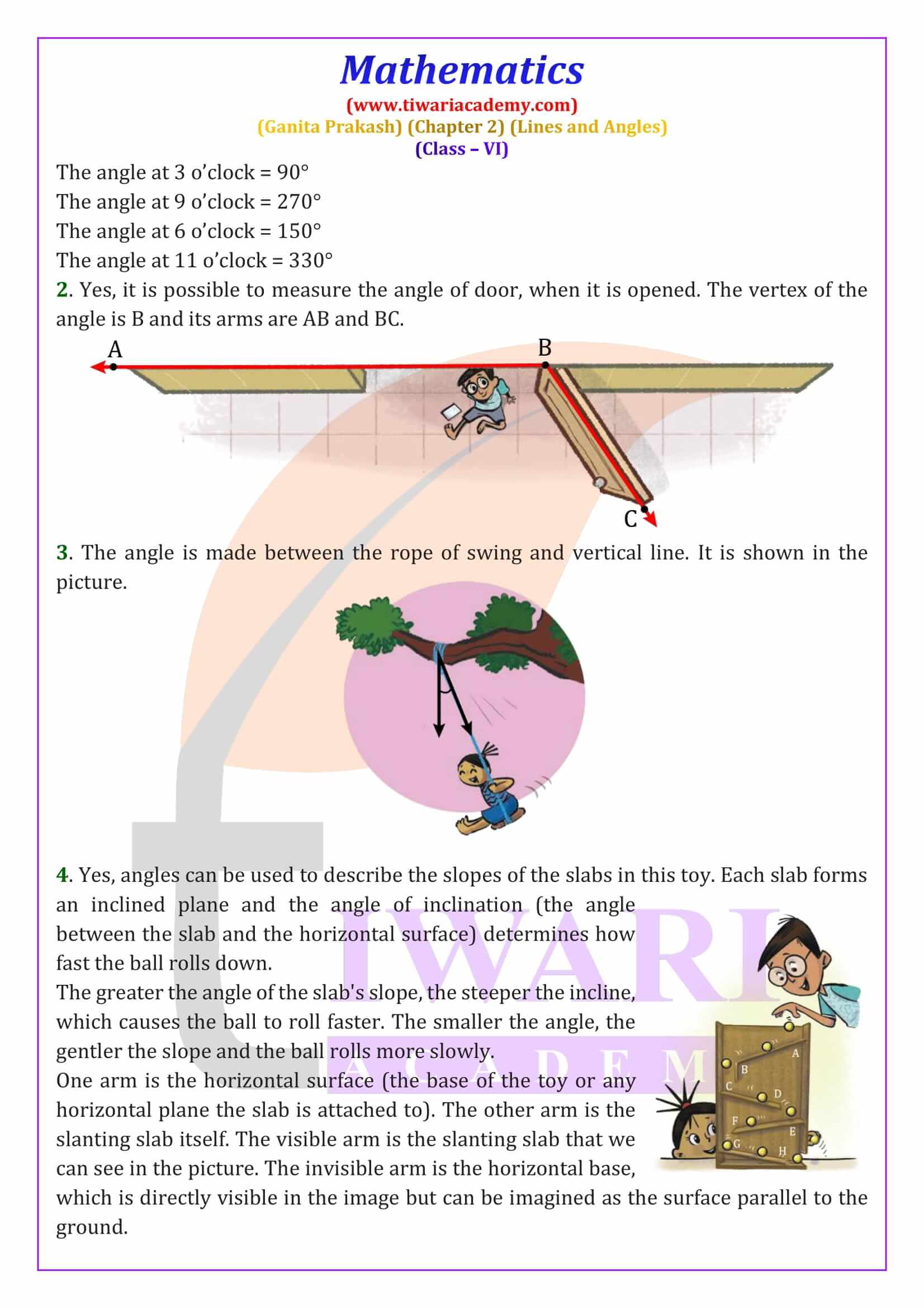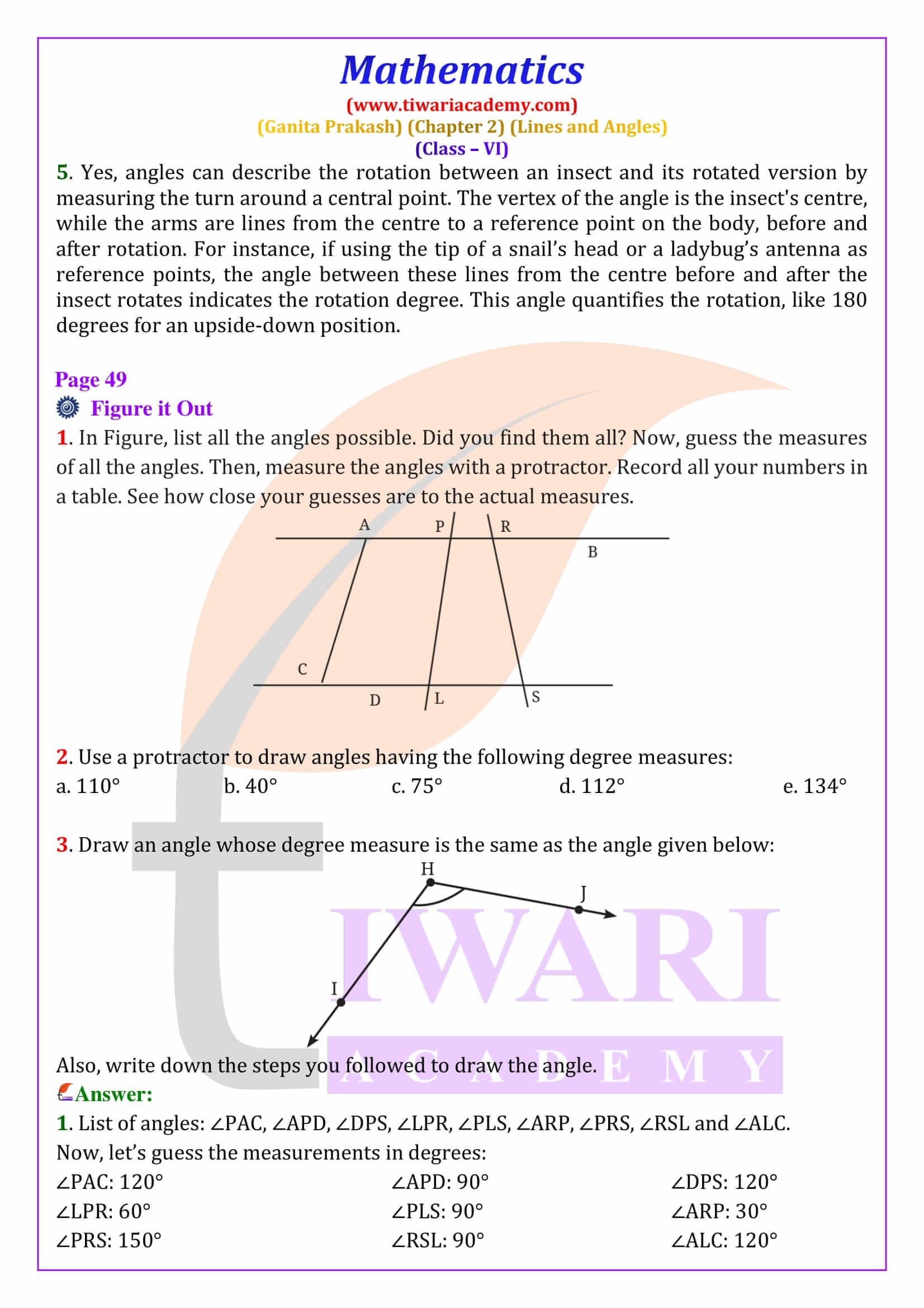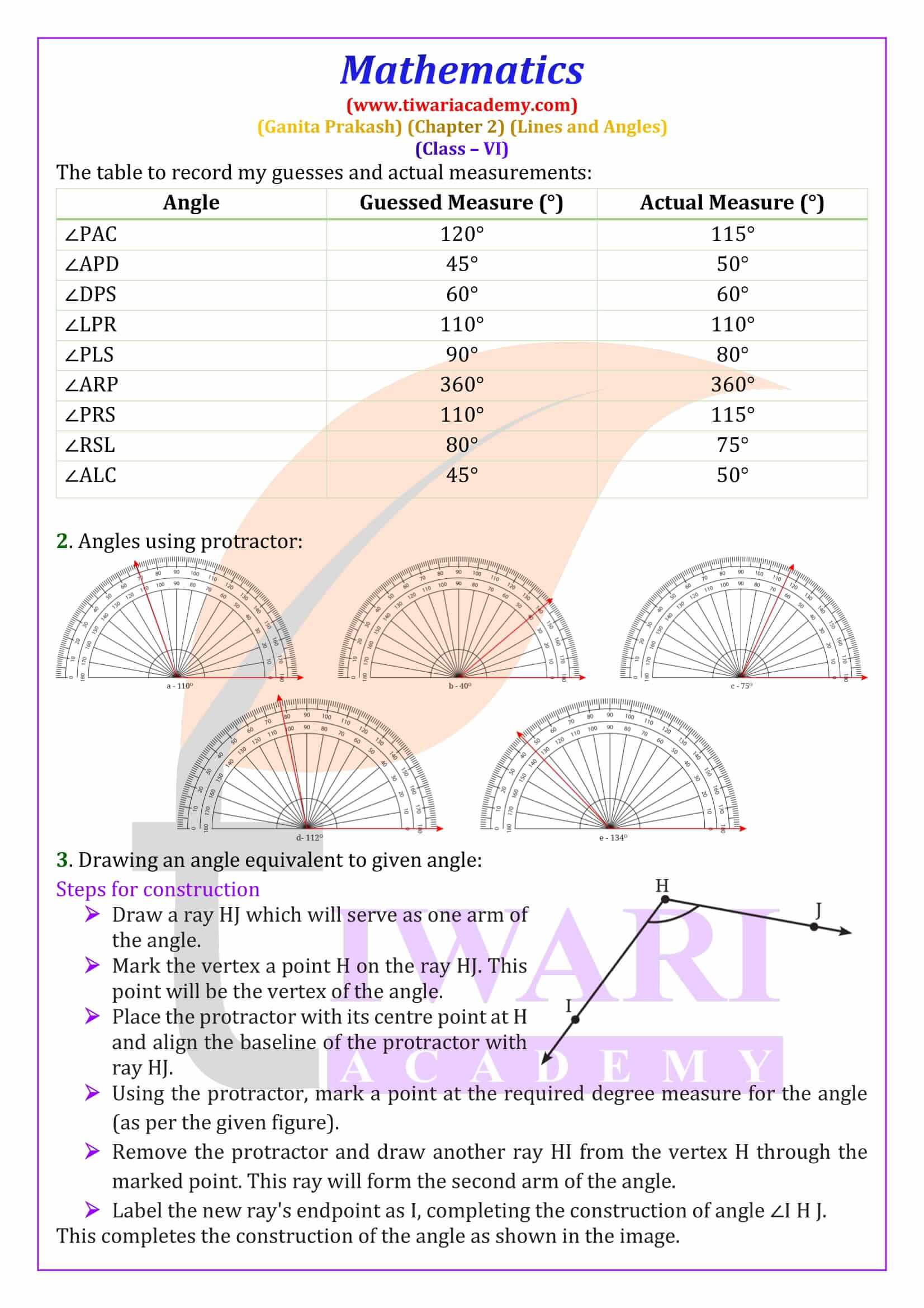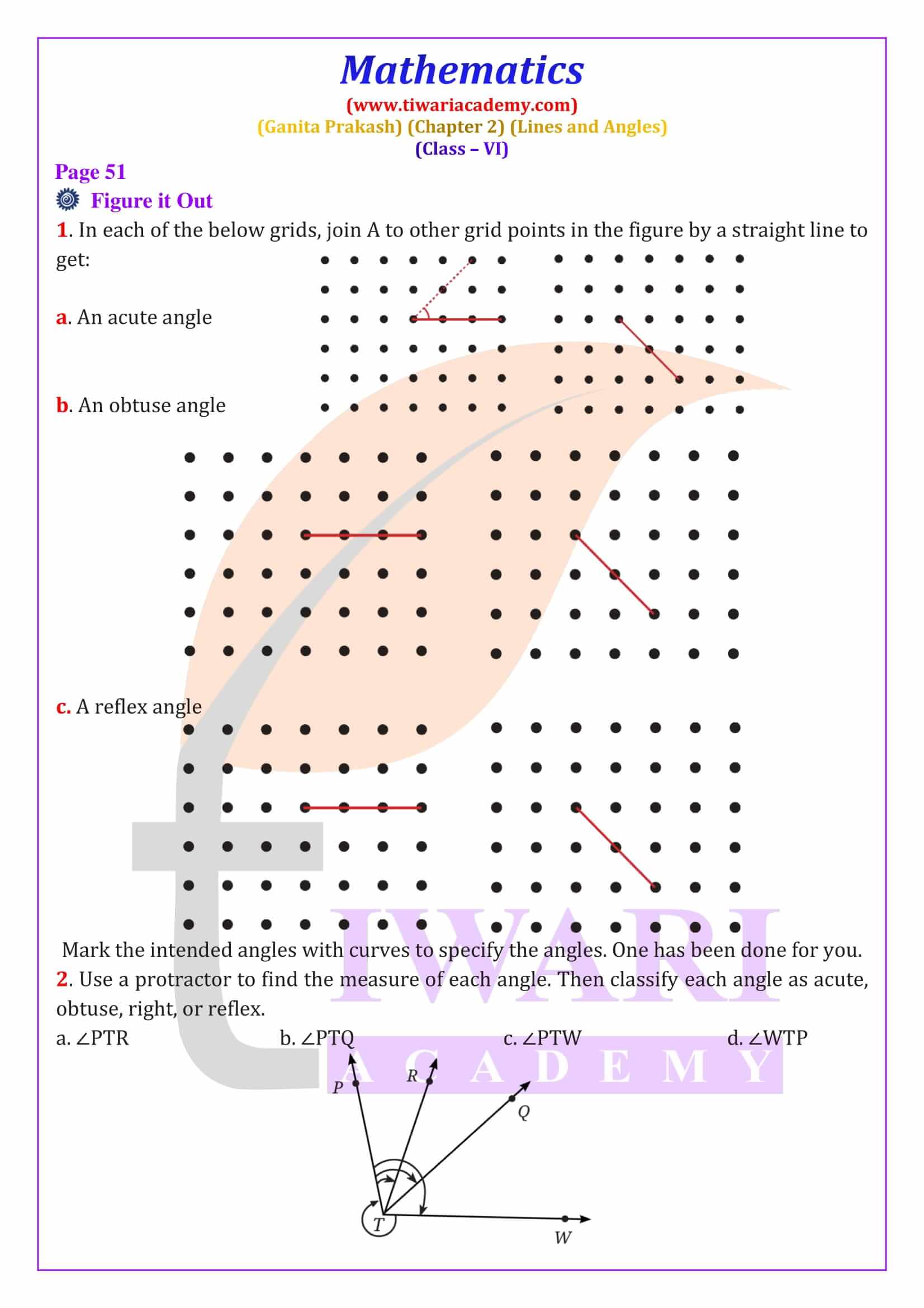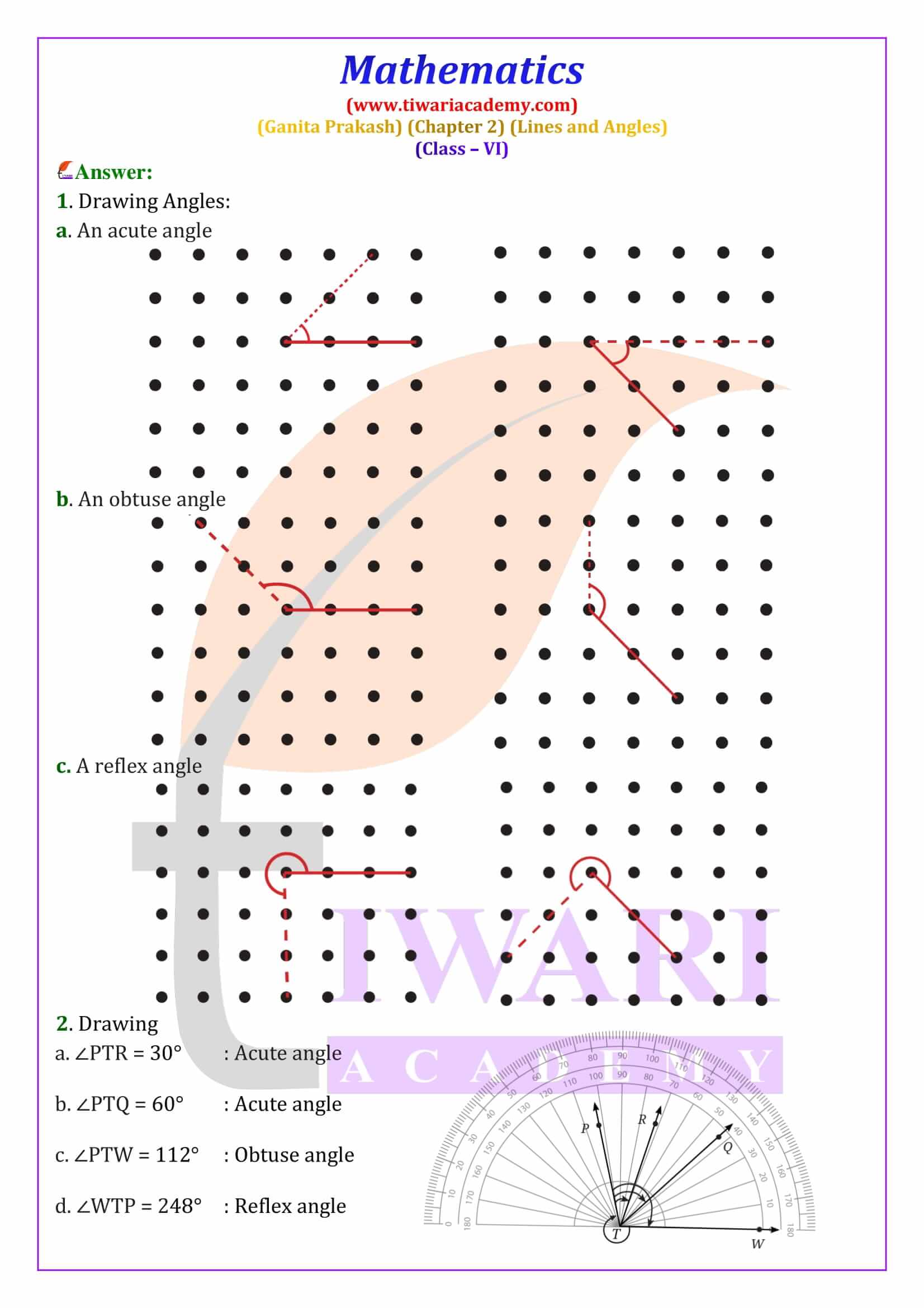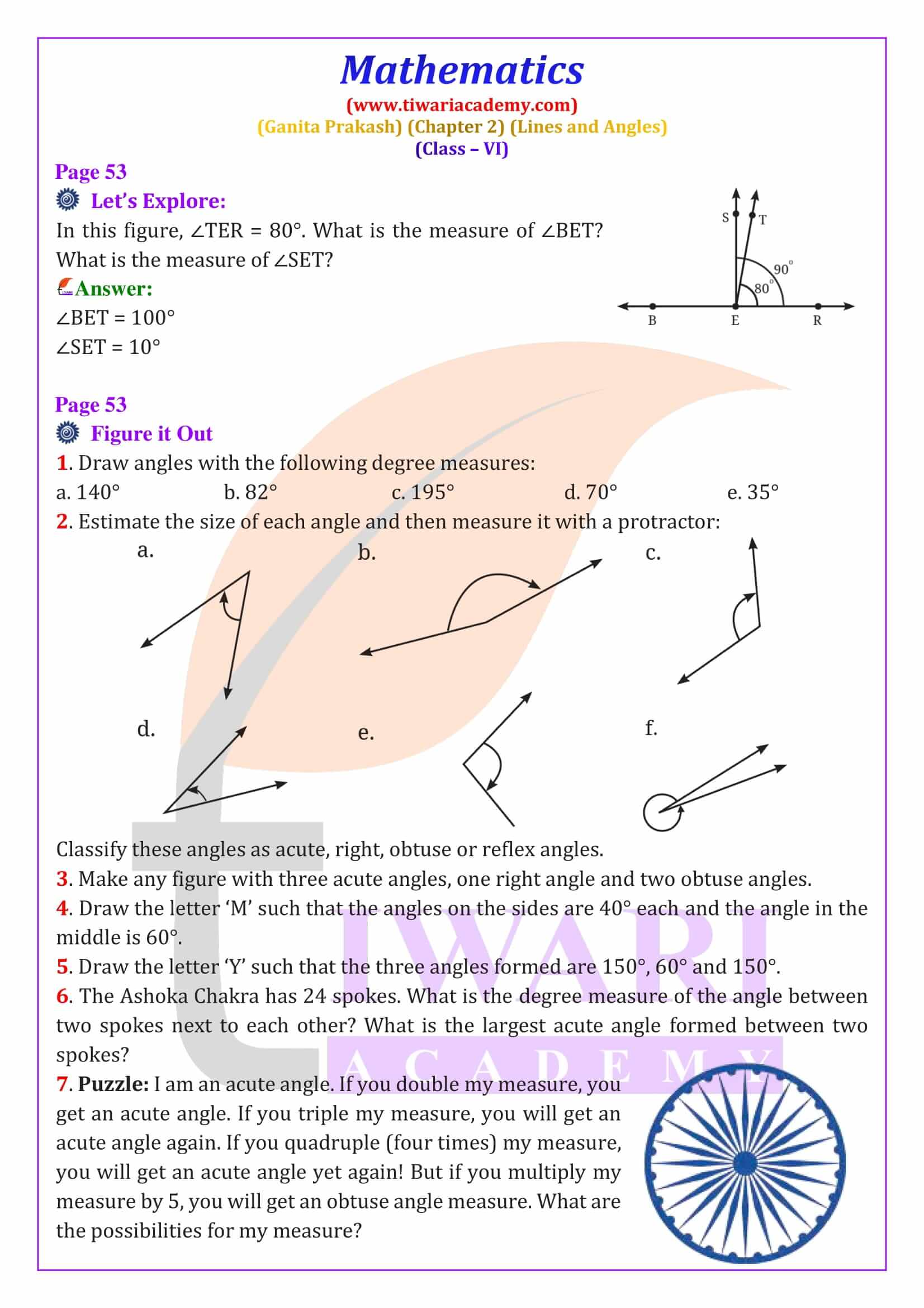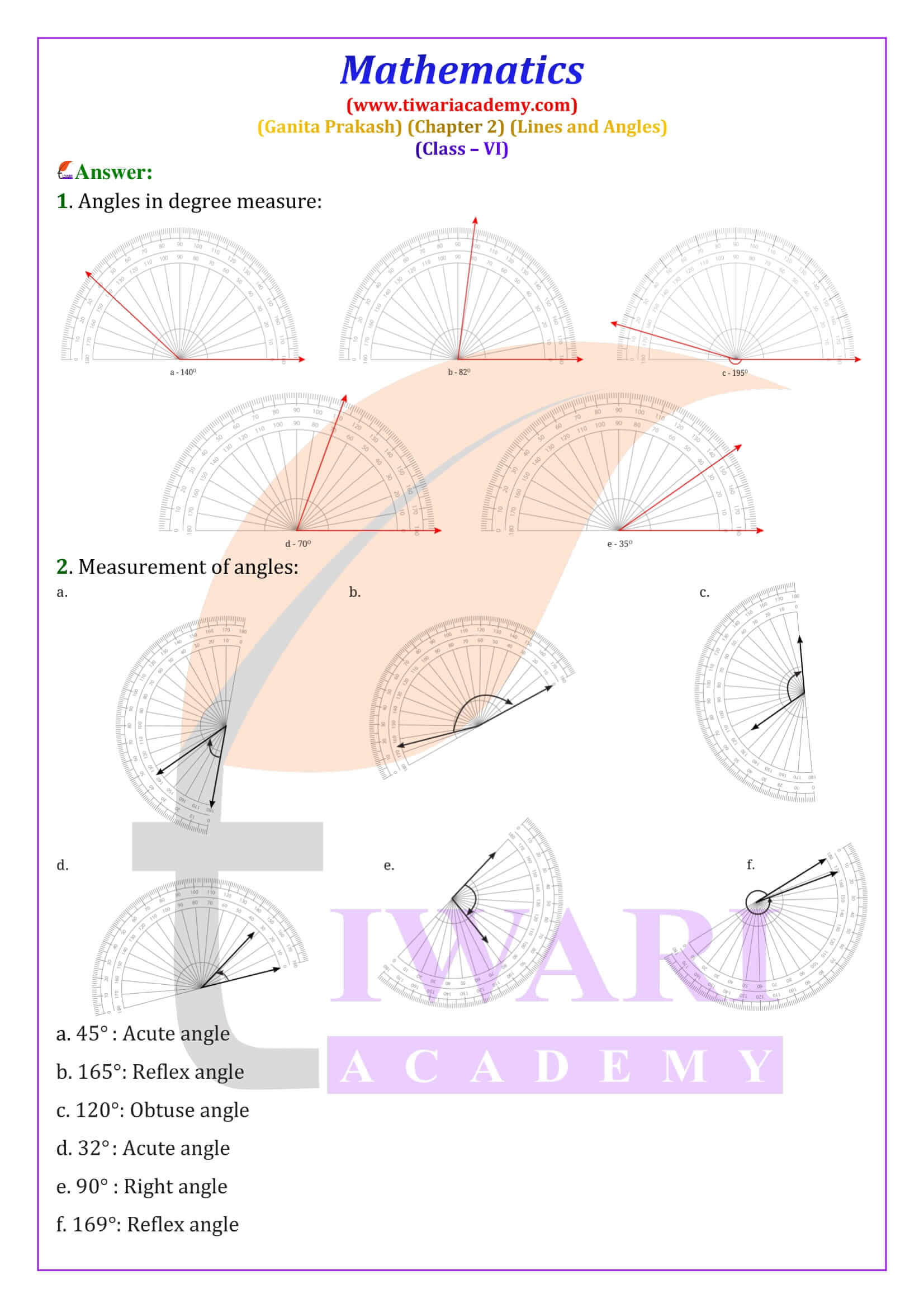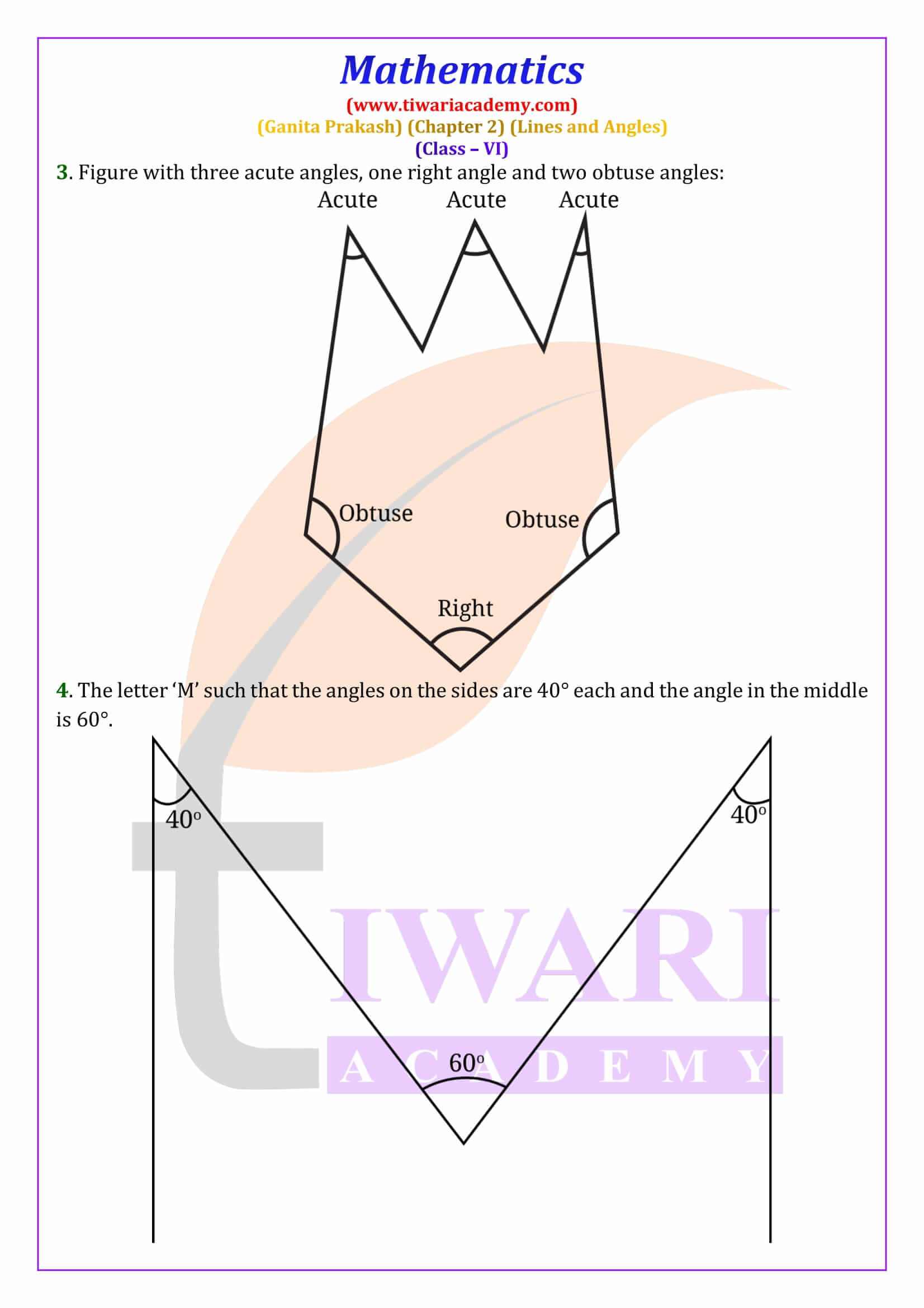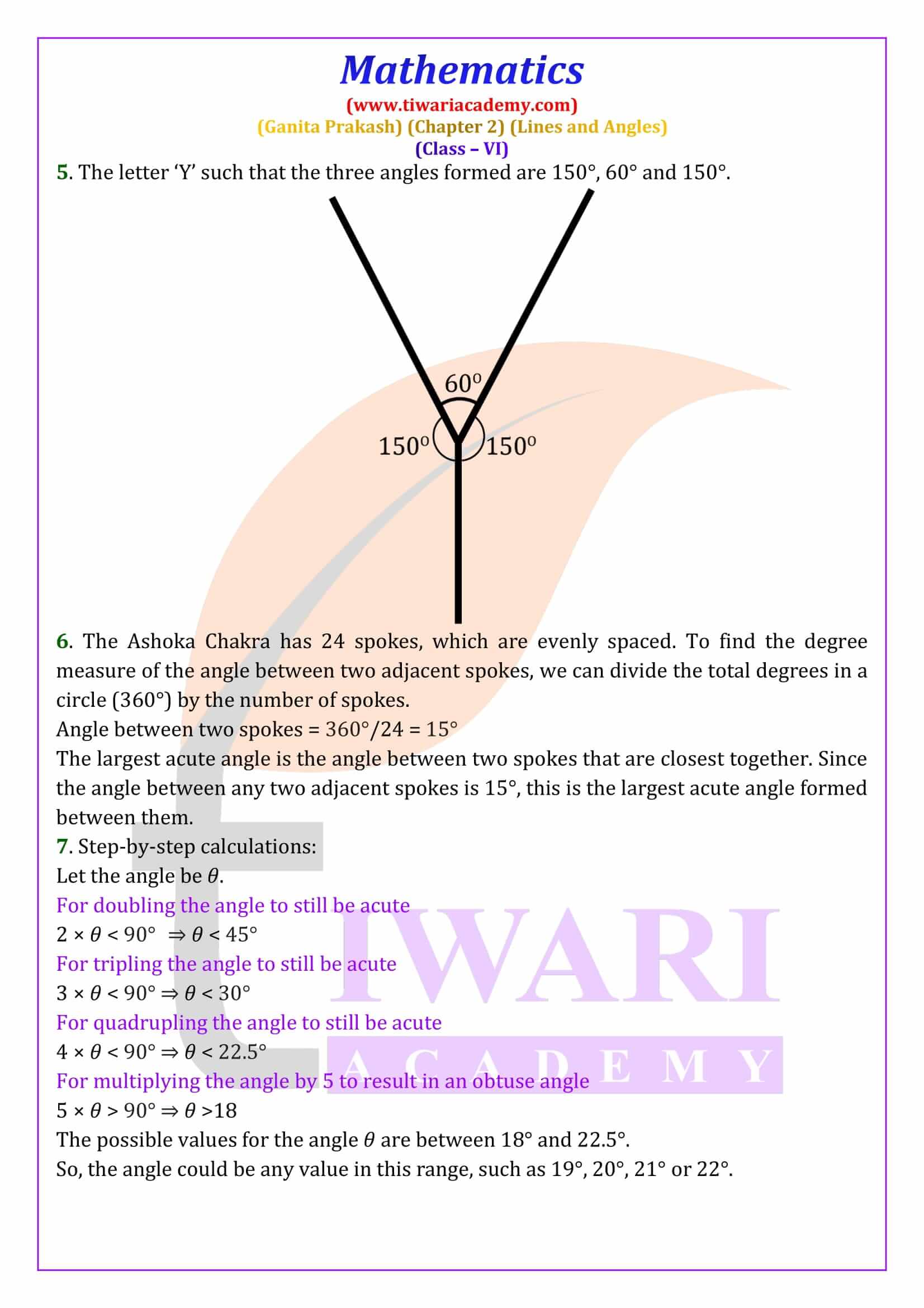NCERT Solutions for Class 6 Maths Ganita Prakash Chapter 2 Lines and Angles updated for academic session 2025-26 in Hindi and English Medium. Learn about different types of lines, angles and their properties through easy-to-understand explanations and examples.
Class 6 Maths Ganita Prakash Chapter 2 Lines and Angles Question Answers
Understanding Points and Line Segments
In class 6 Maths Ganit Prakash chapter 2, we explore basic geometry concepts such as points, lines, line segments, rays and angles. A point is a precise location without any dimensions. You can think of it as the tip of a sharp pencil. A line segment is the shortest distance between two points. If you connect two points, such as A and B, with a straight line, you get a line segment, denoted as AB. This concept helps us visualize the shortest path between two locations.
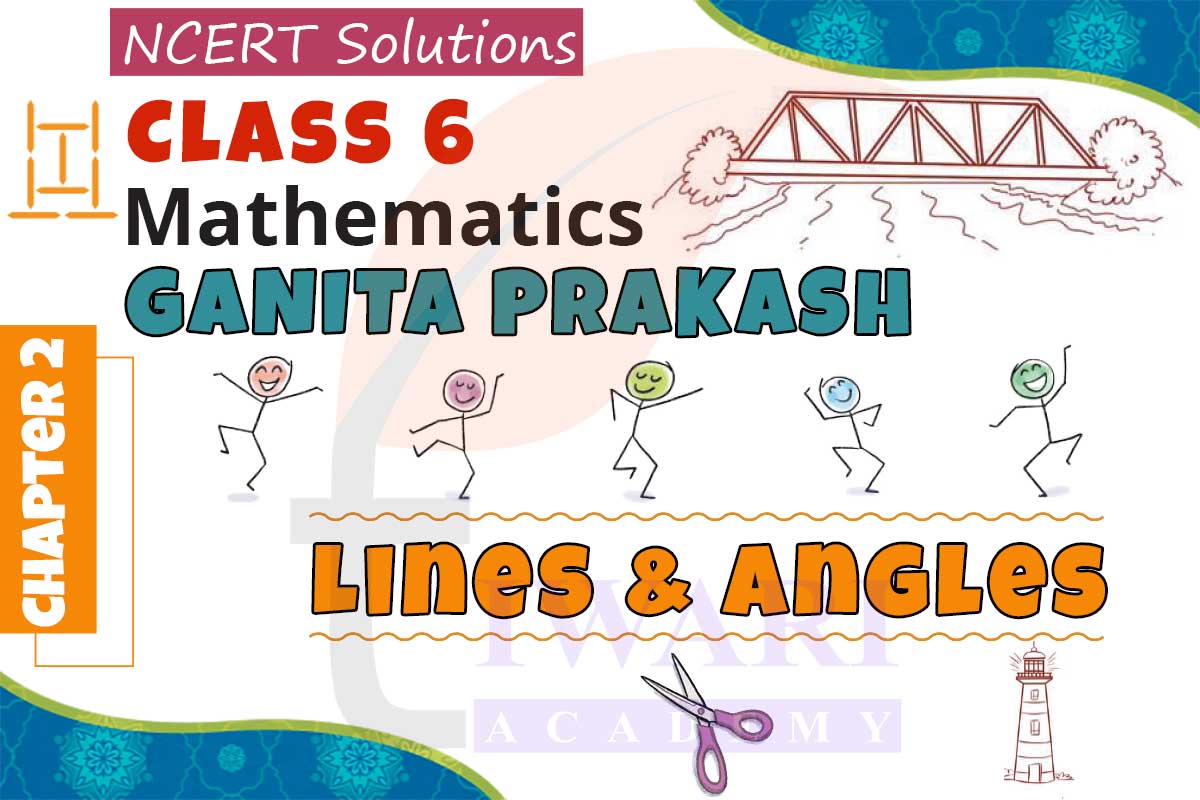
Lines and Rays
When you extend a line segment infinitely in both directions, it becomes a line. For example, a line that passes through points A and B is written as AB, and it has no endpoints. A ray, on the other hand, has one starting point and extends infinitely in one direction. Think of a ray of sunlight—its starting point is the sun and it continues endlessly. A ray is written with its starting point first, such as AP, where A is the starting point and P is any point on the ray.
What is an Angle?
An angle is formed when two rays share a common starting point called the vertex. For instance, if rays BD and BE share a starting point at B, they form an angle ∠DBE. The size of an angle depends on the amount of rotation between the rays. Angles are an essential part of geometry, helping us measure turns and rotations in real life, such as opening a book or rotating the hands of a clock.
Types of Angles
There are different types of angles based on their size. If an angle is less than 90 degrees, it is called an acute angle. If it is exactly 90 degrees, it is a right angle. When an angle is greater than 90 degrees but less than 180 degrees, it is called an obtuse angle. A straight angle is exactly 180 degrees, and angles greater than 180 degrees but less than 360 degrees are called reflex angles.
Comparing and Measuring Angles
We can compare angles by observing their size or using a protractor. To measure an angle, we use a tool called a protractor, which divides a circle into 360 degrees. A right angle measures 90 degrees, and a straight angle measures 180 degrees. By using a protractor, you can find the exact measure of any angle, helping you understand its size and how it compares to other angles.
Using Angles in Daily Life
Angles appear all around us, from the hands of a clock to the corners of a room. In fact, every time you open a door or look at a book, you are working with angles. For example, the angle between the hands of a clock at 3 o’clock is 90 degrees. Understanding angles helps us navigate the world, from building structures to designing tools.
Class 6 Maths Ganita Prakash Chapter 2 Practical Exercises
To deepen your understanding, try using a protractor to measure angles around you. Draw lines, rays, and angles on paper and measure them. Compare them by using superimposition, where you place one angle over another to see which one is larger. Also, explore different objects in your environment to find examples of acute, obtuse and right angles.
To get the complete NCERT solutions for this chapter, visit Tiwari Academy for the best step-by-step guidance.
